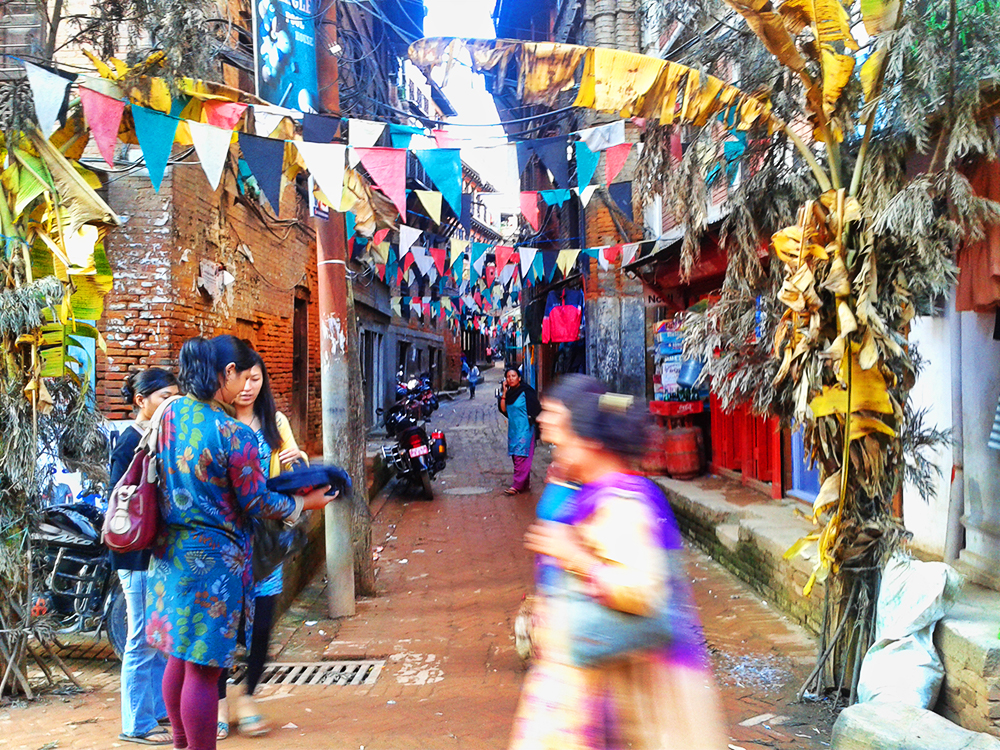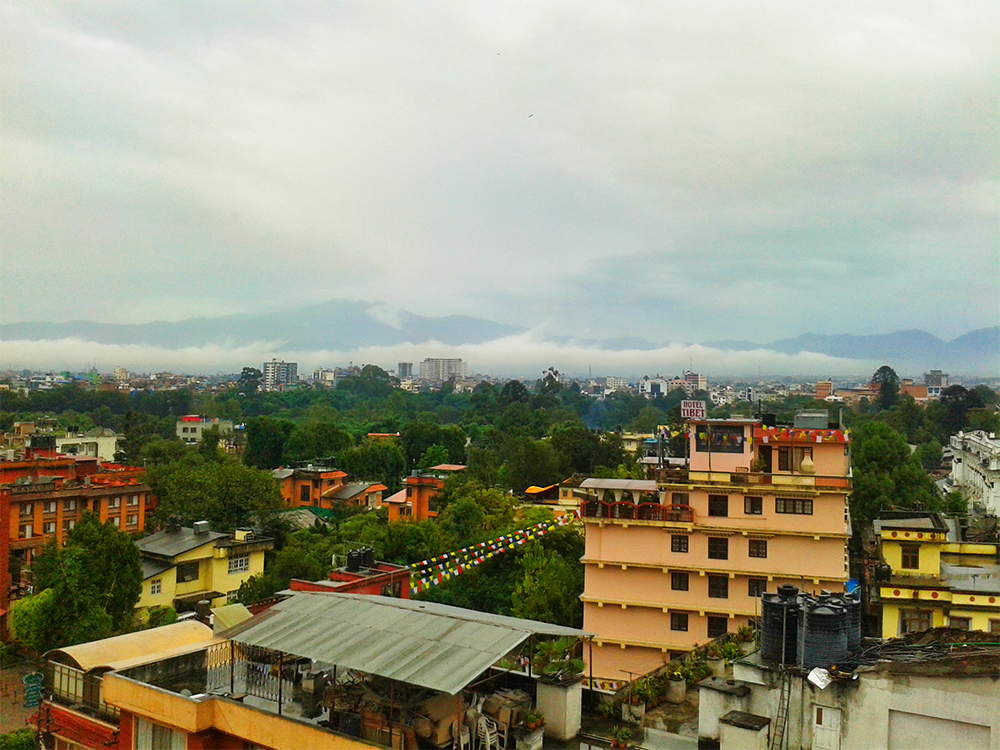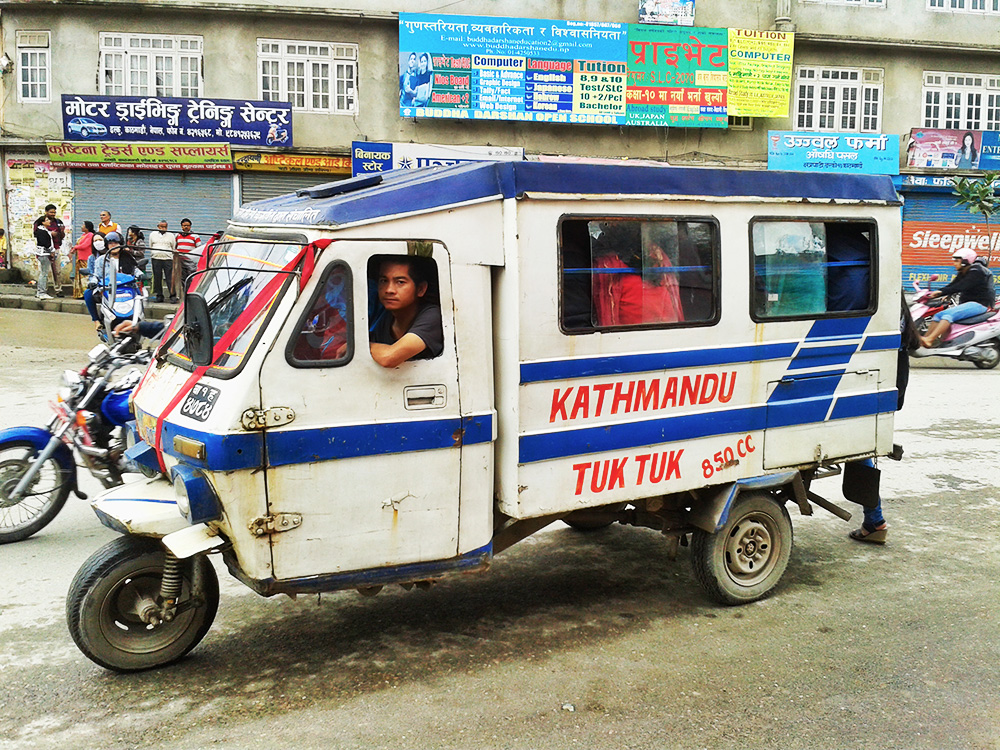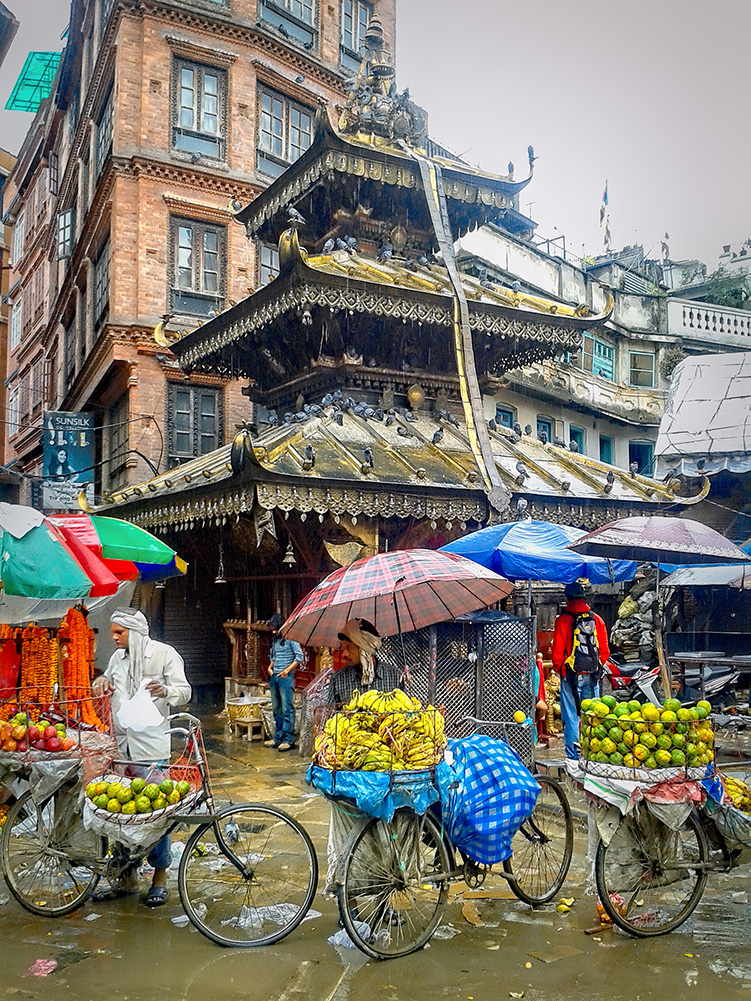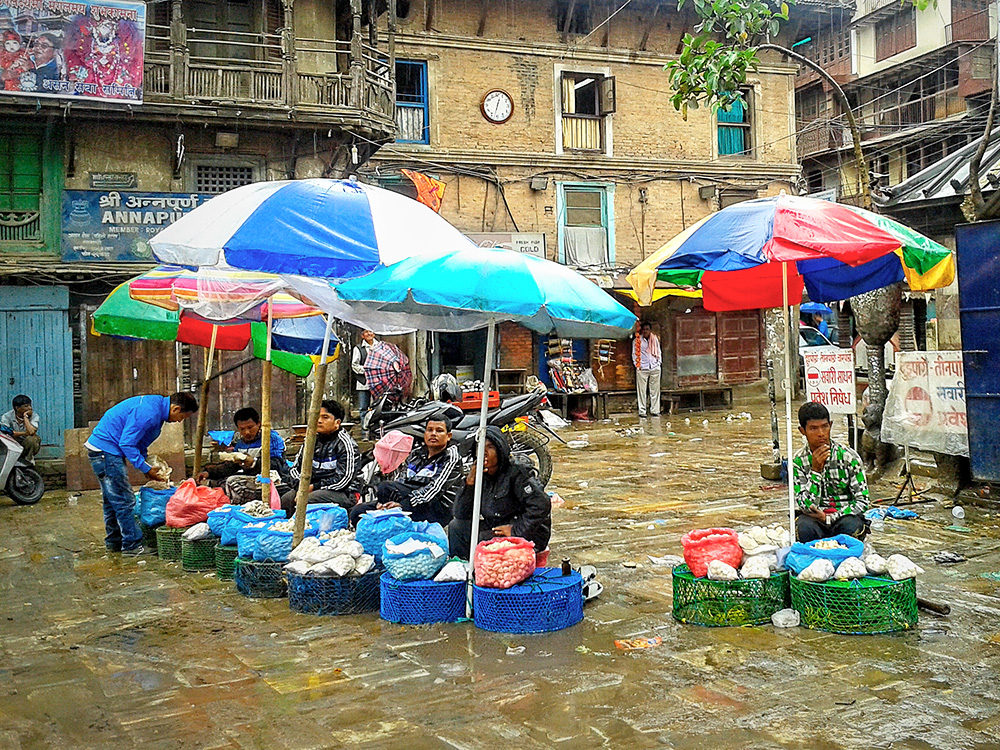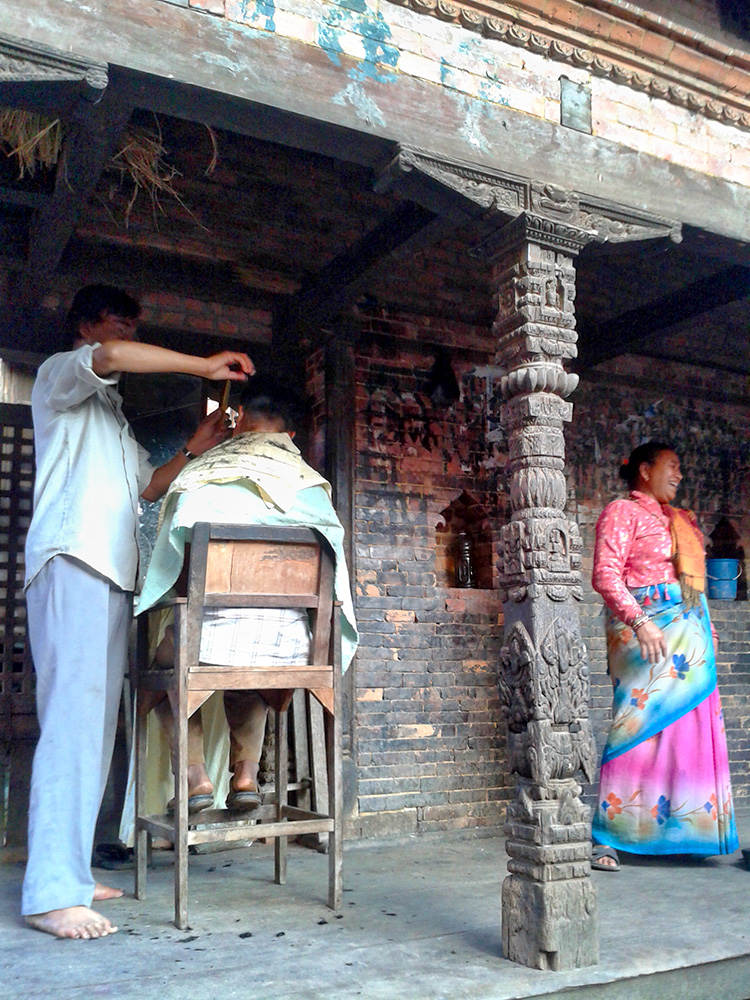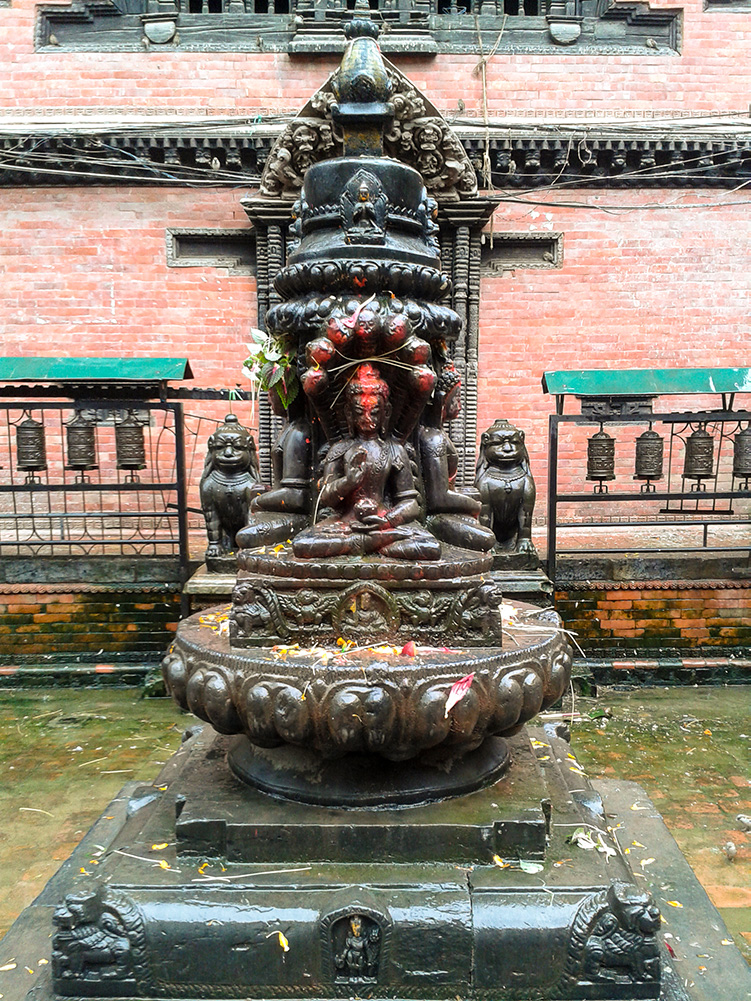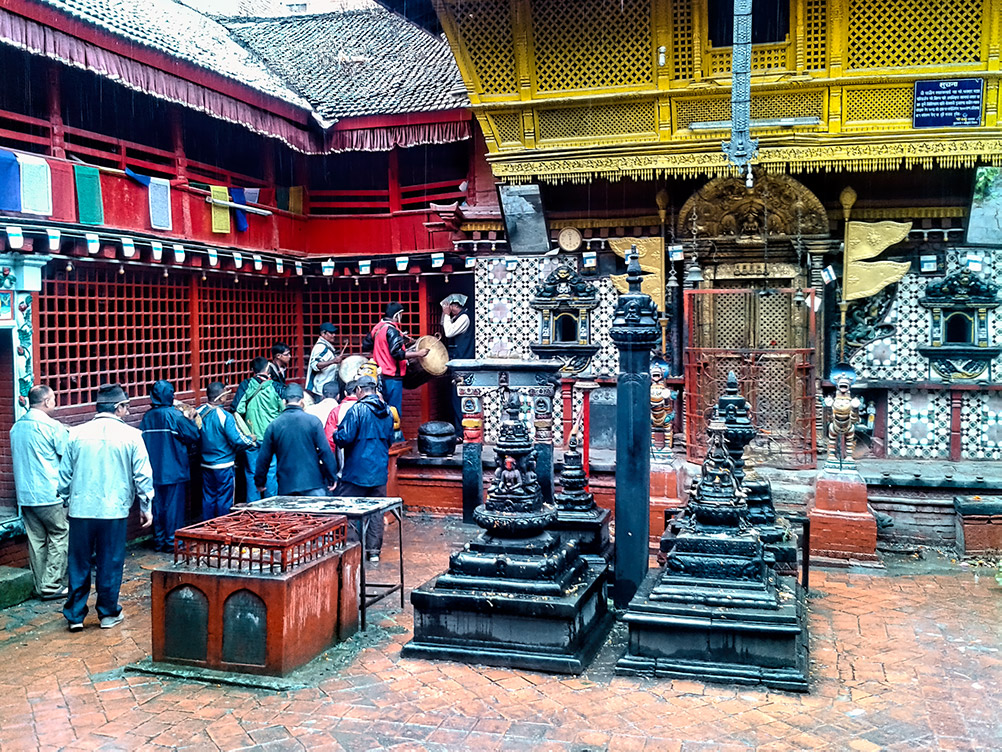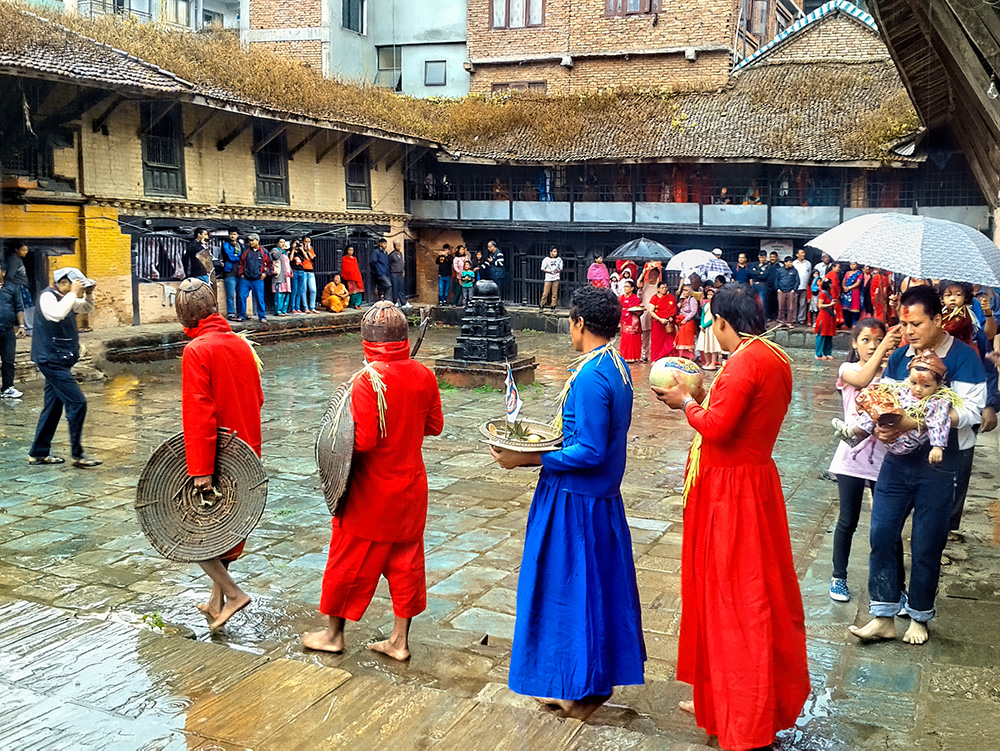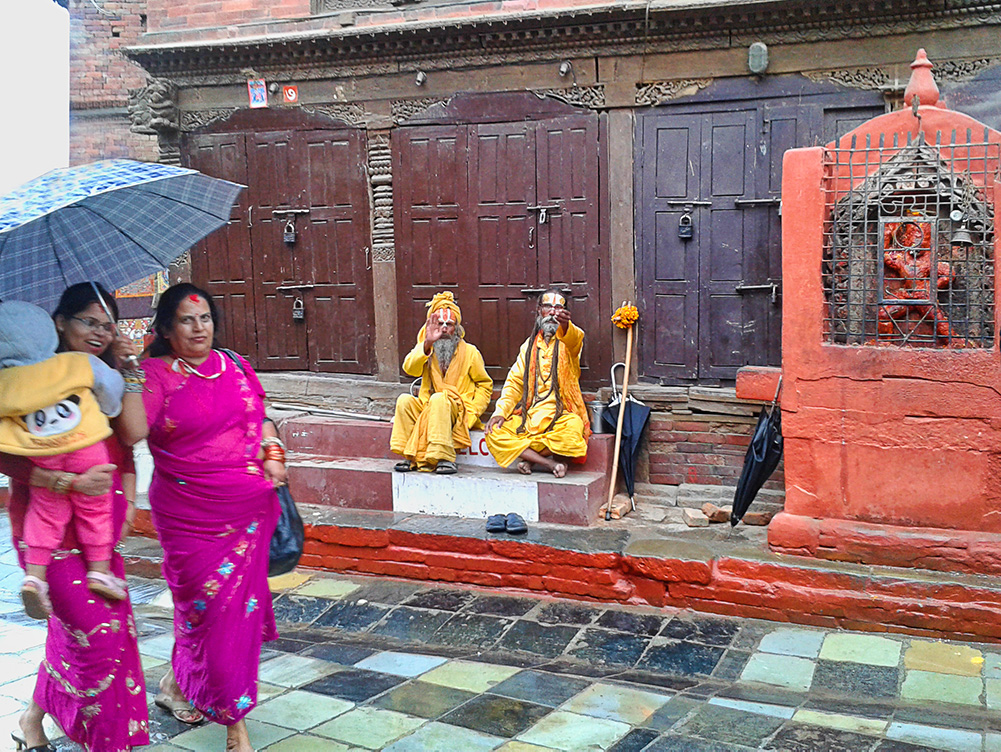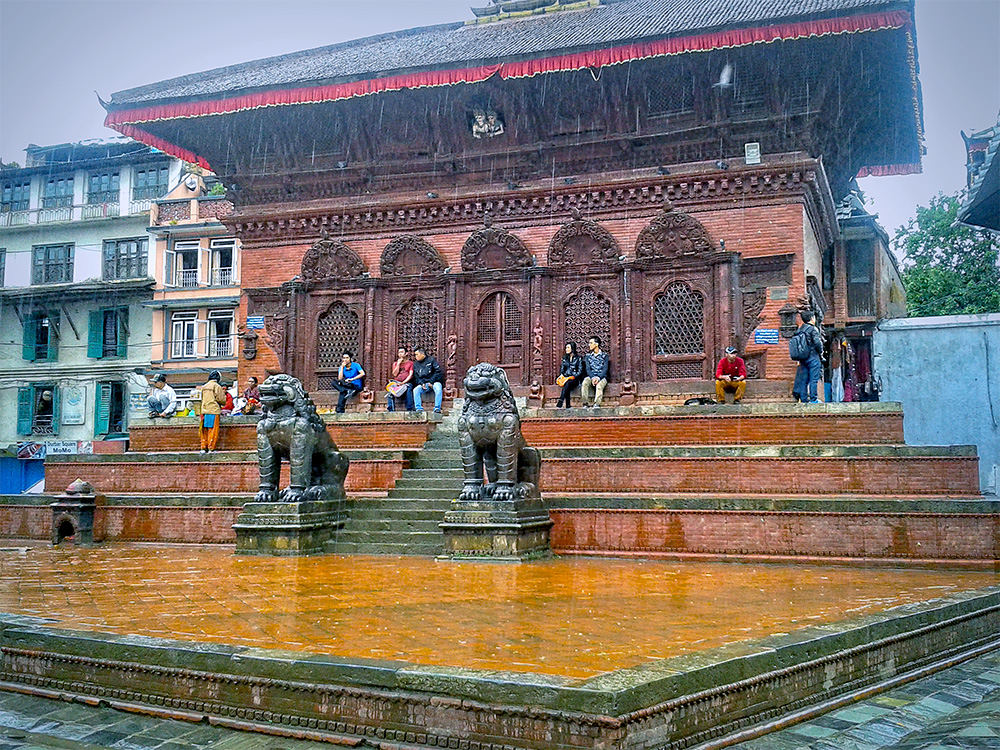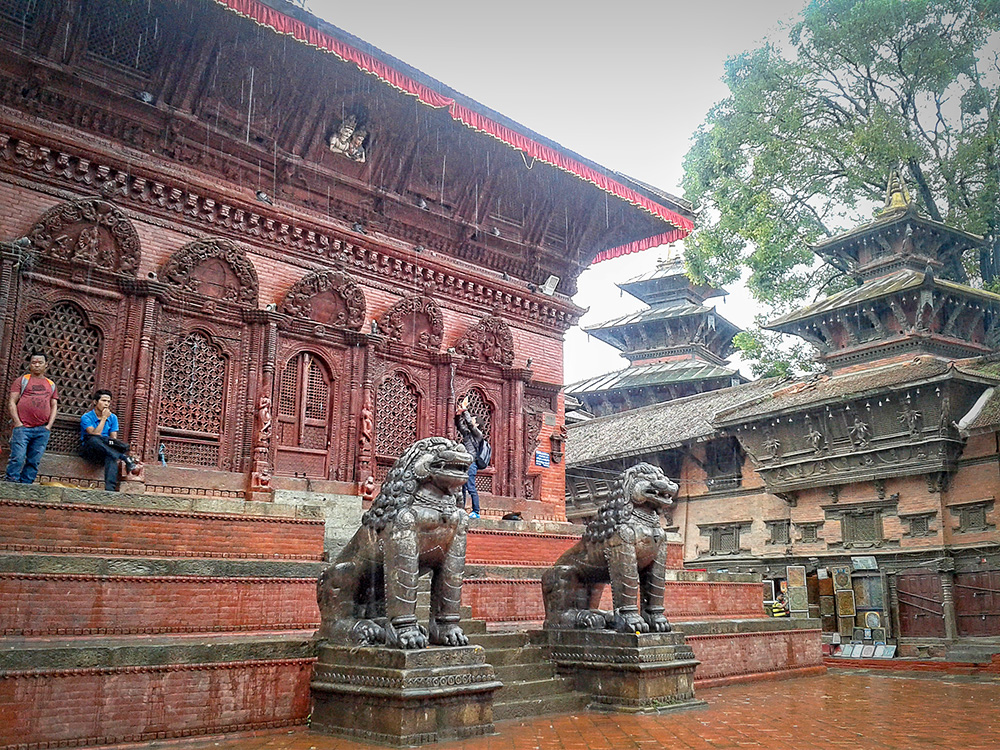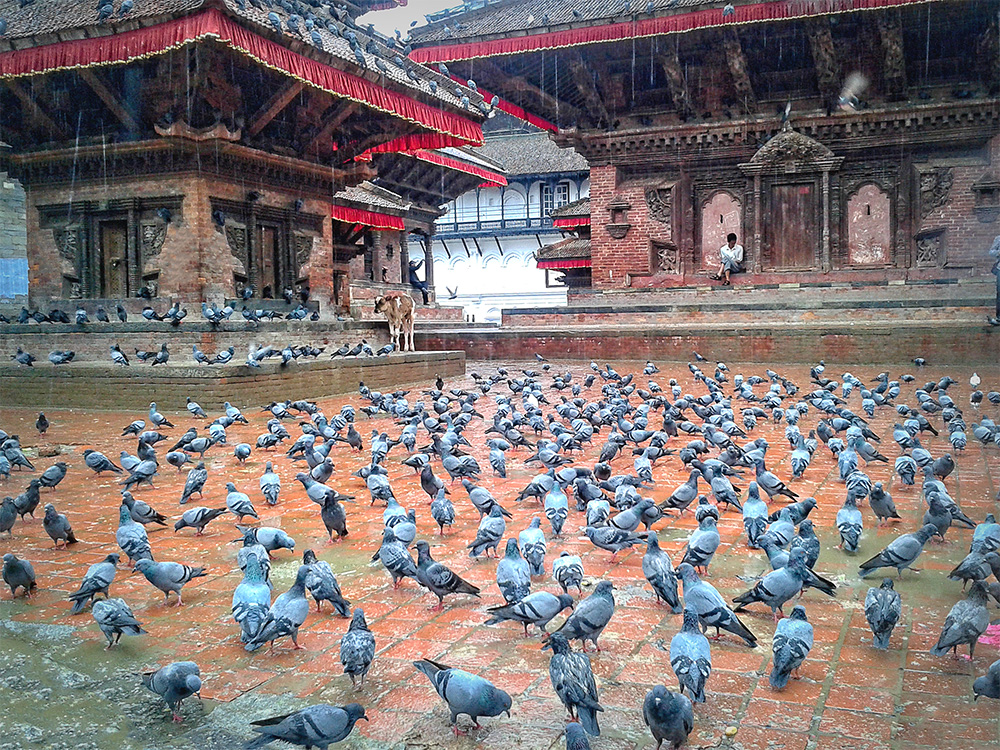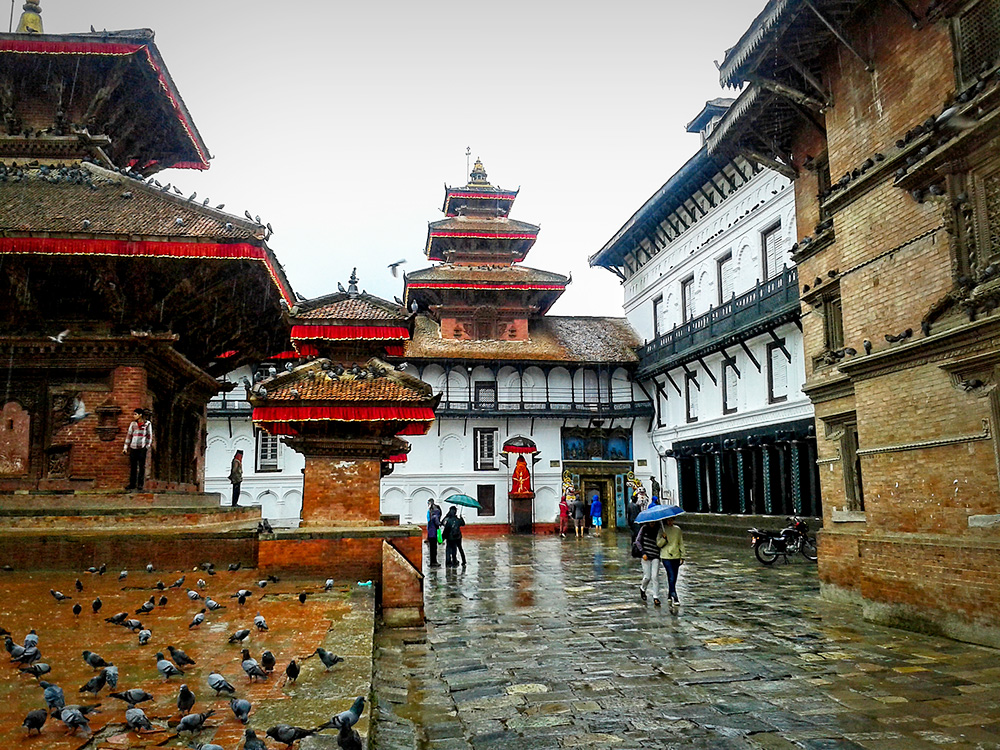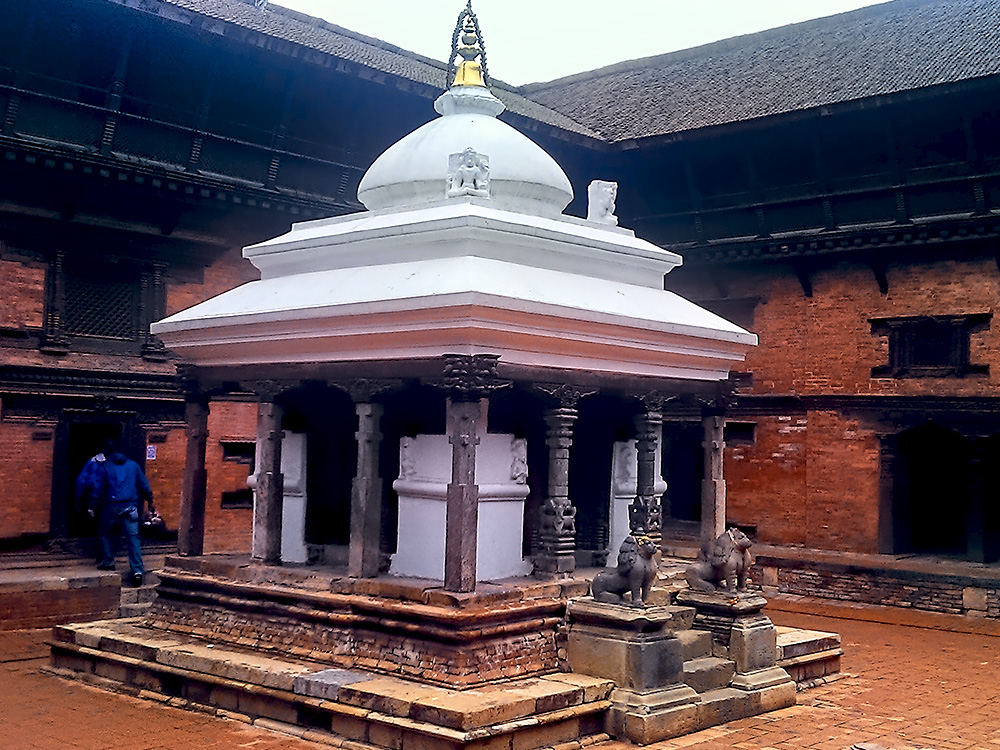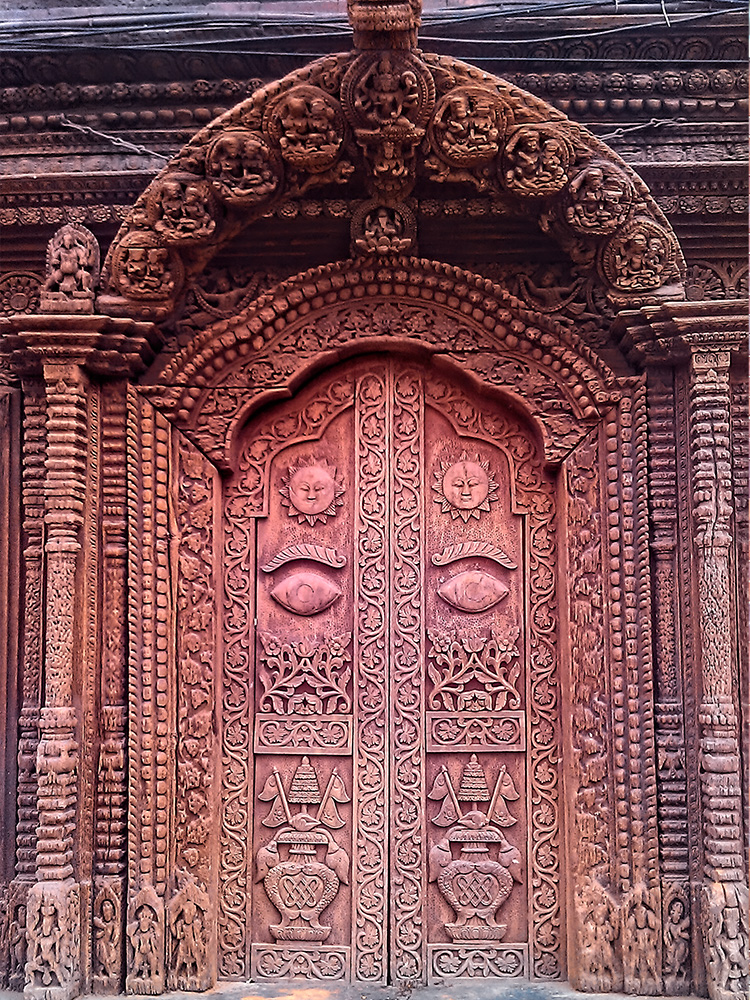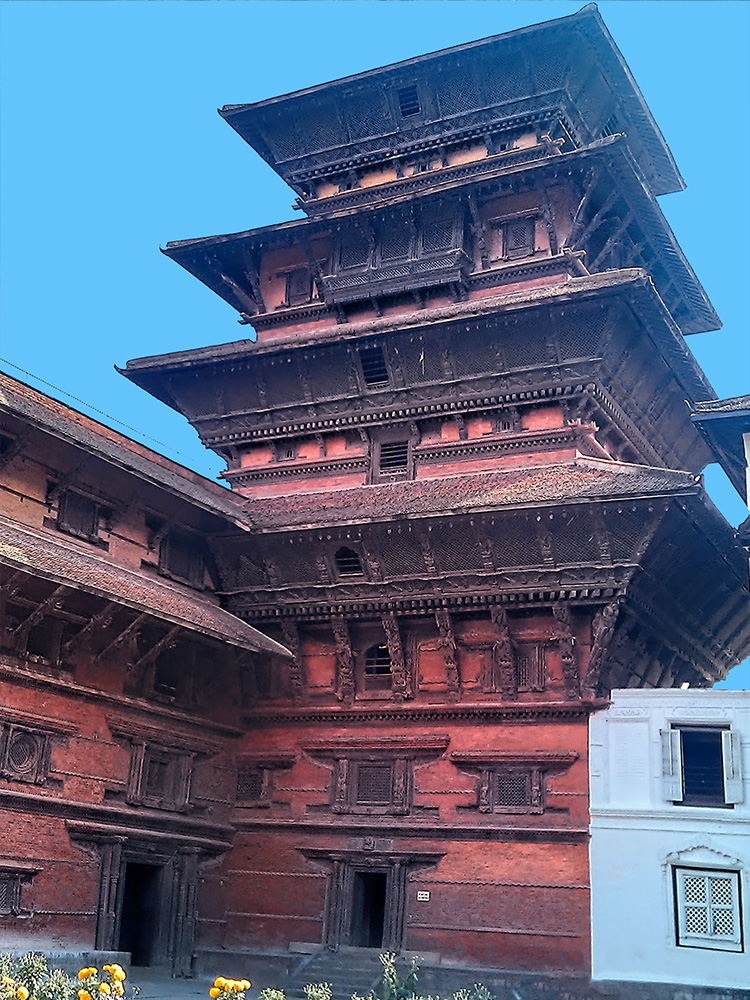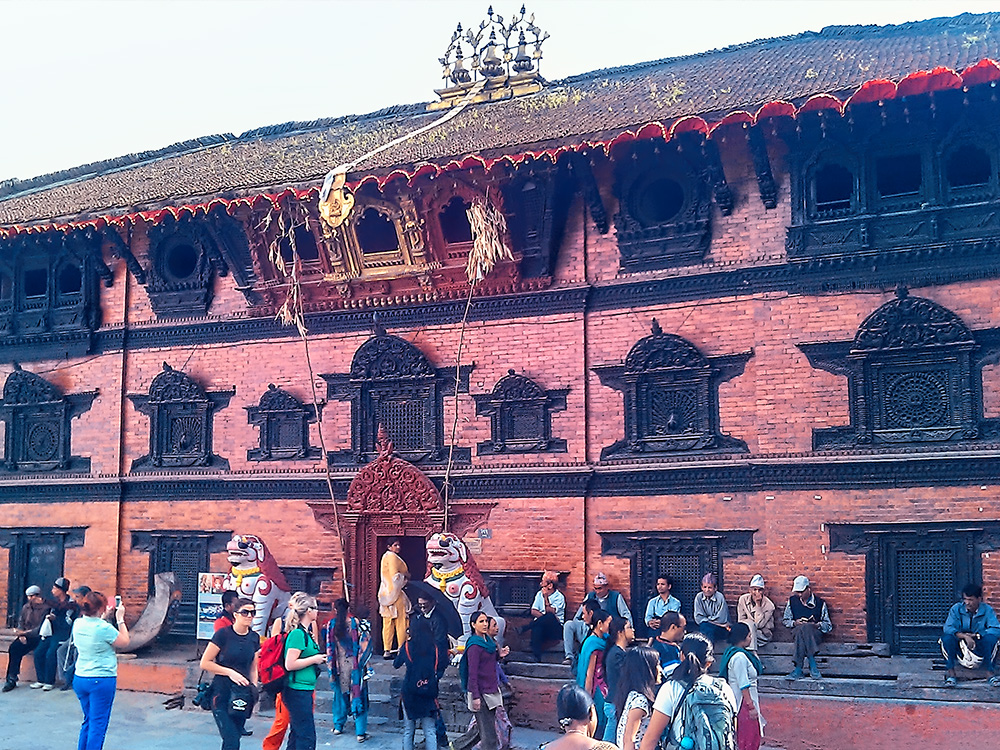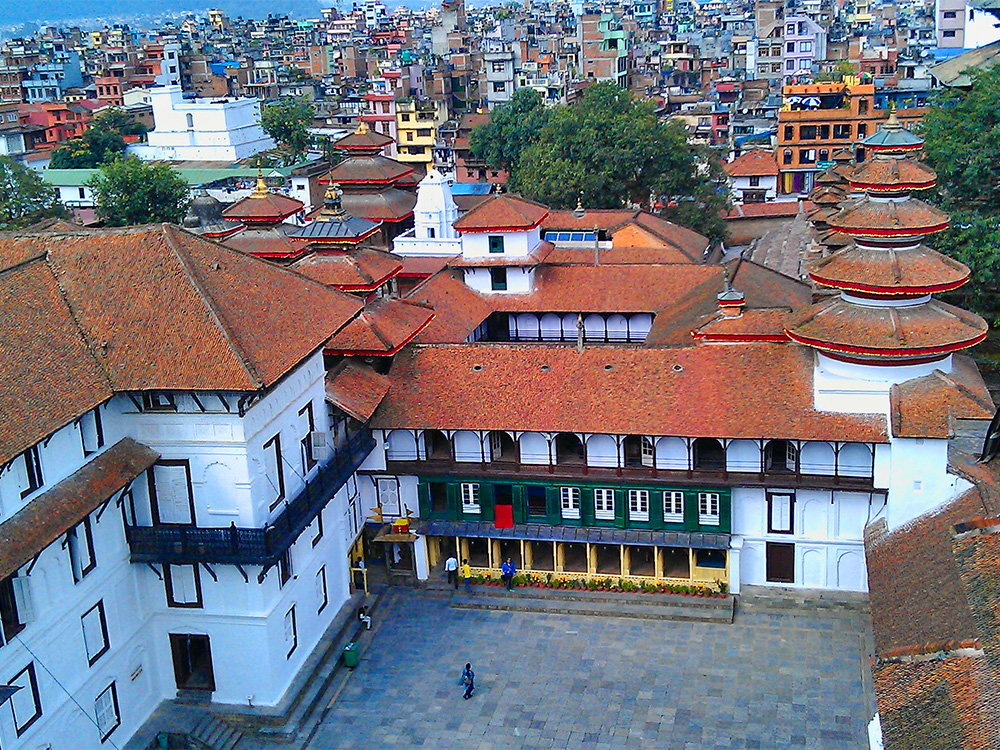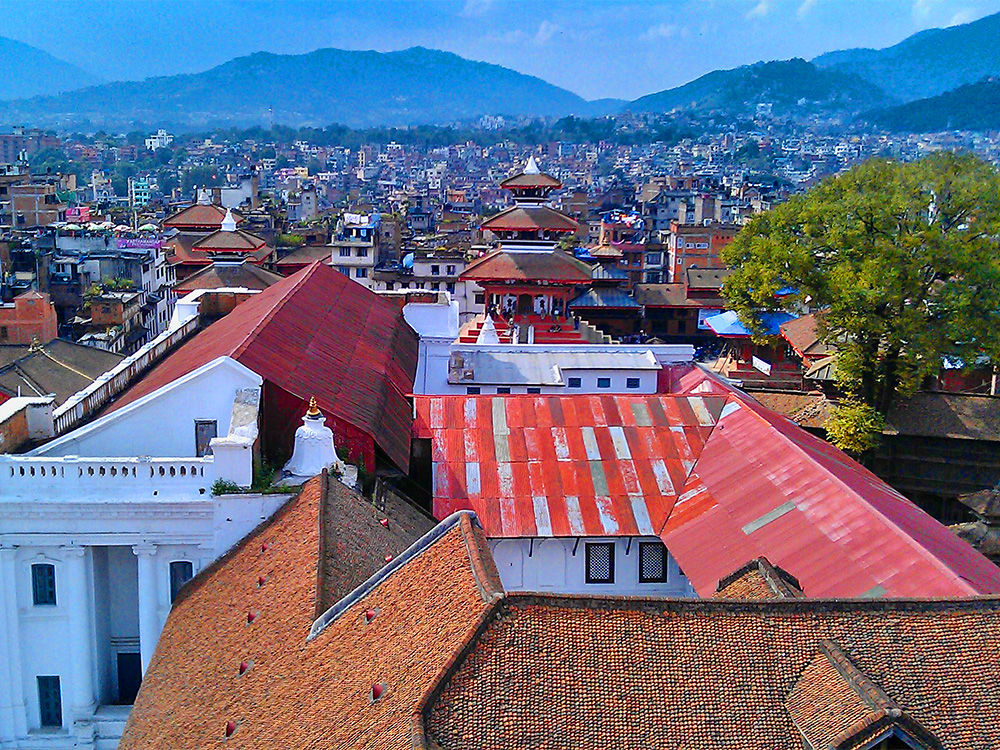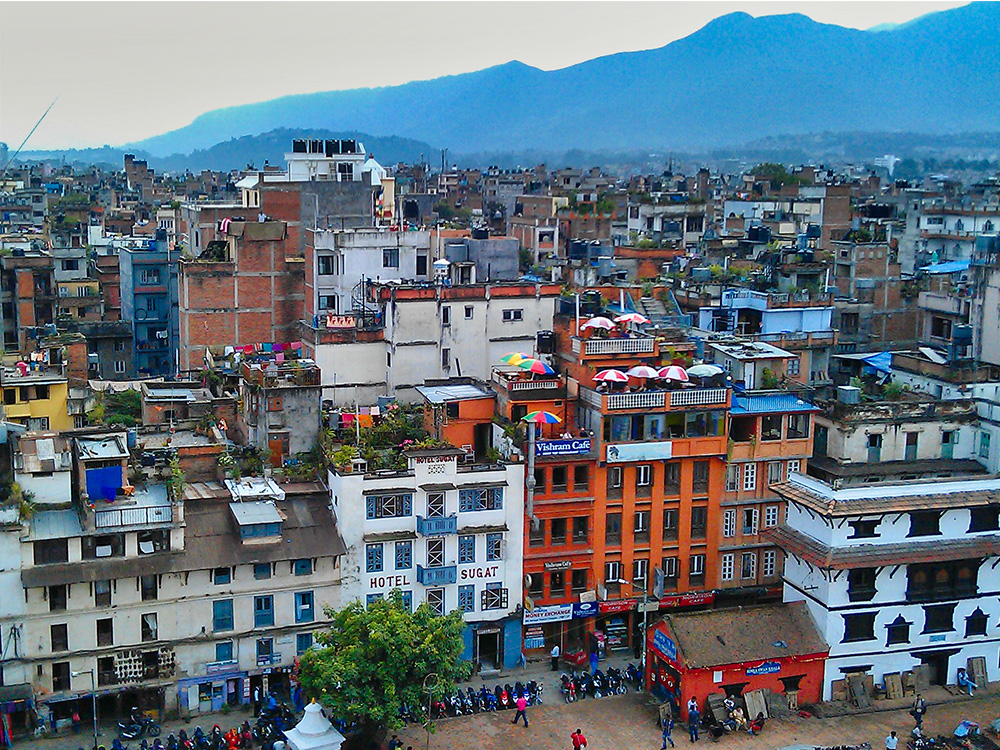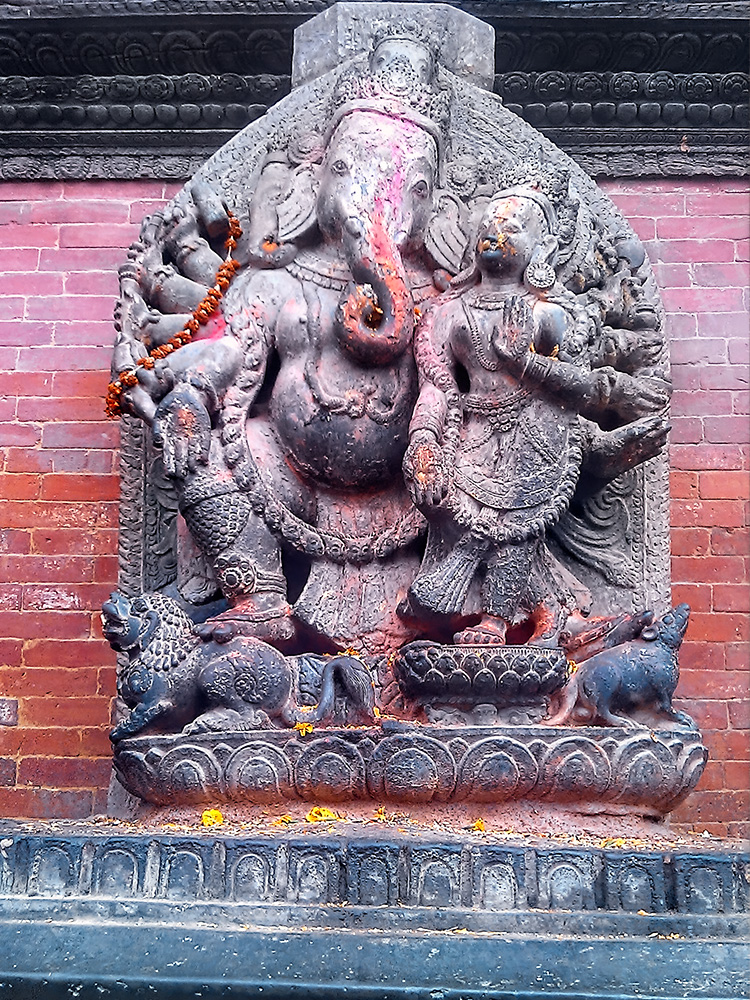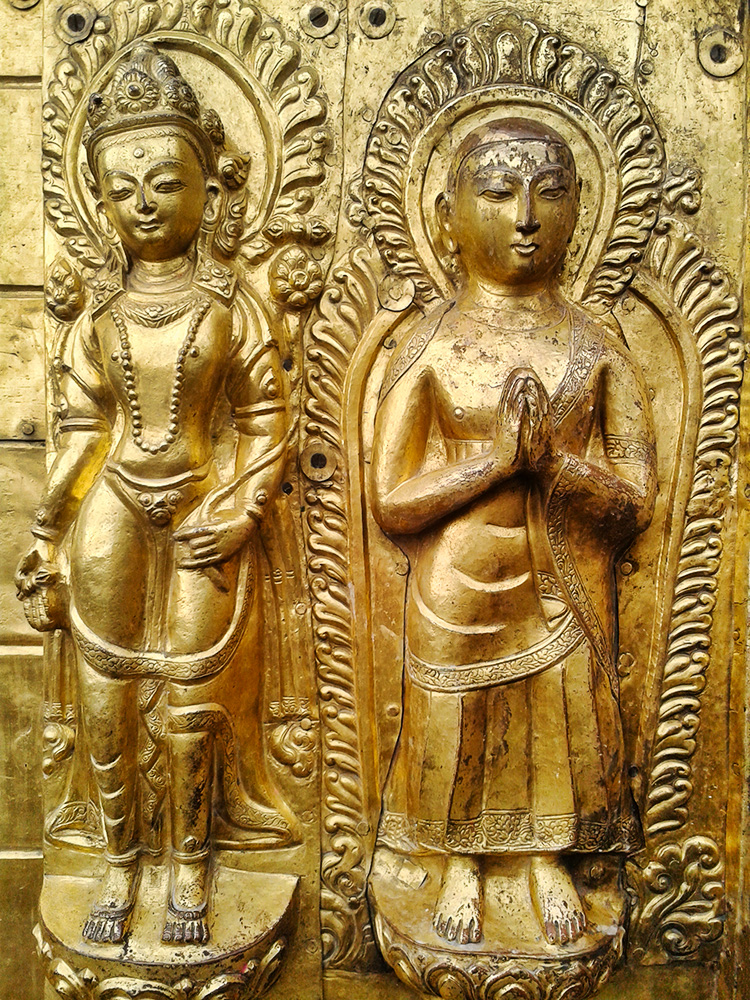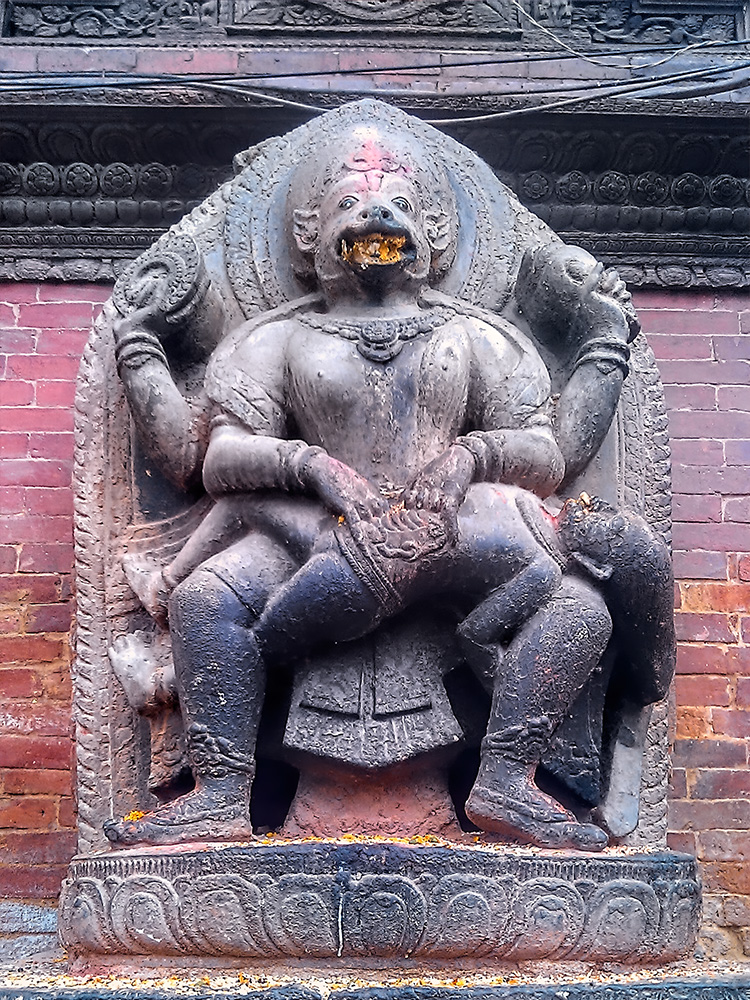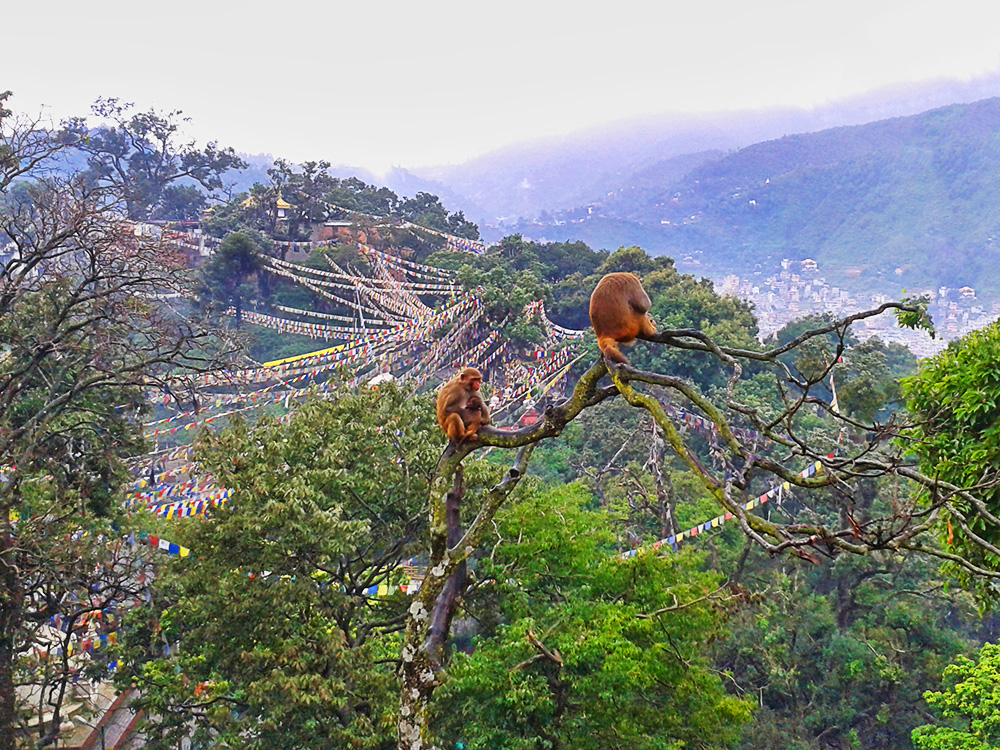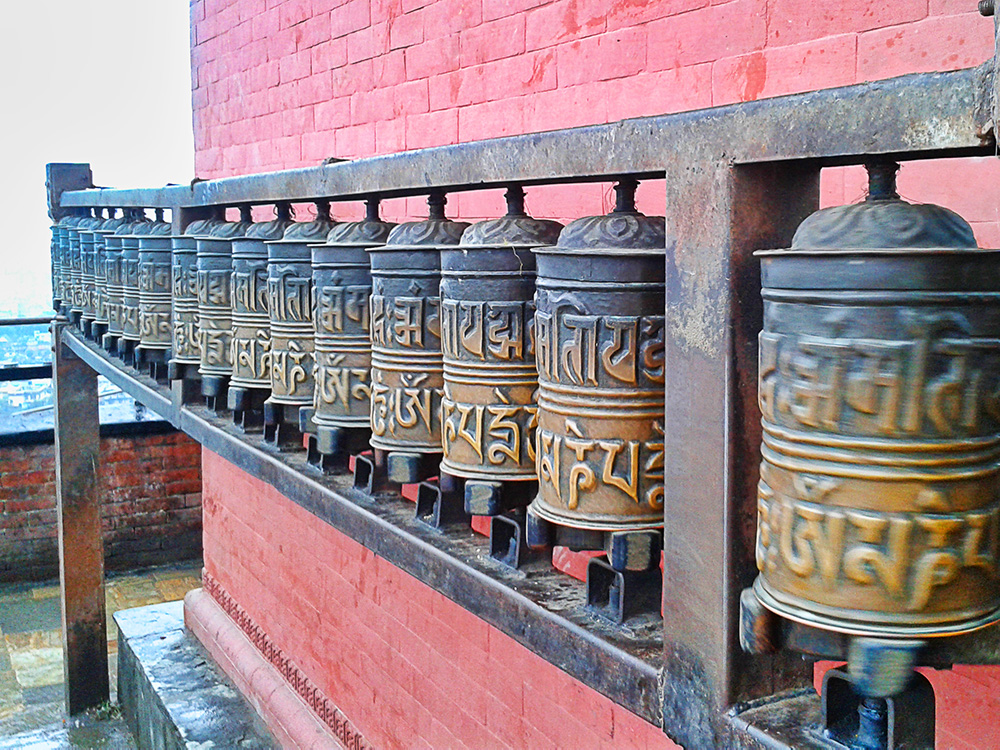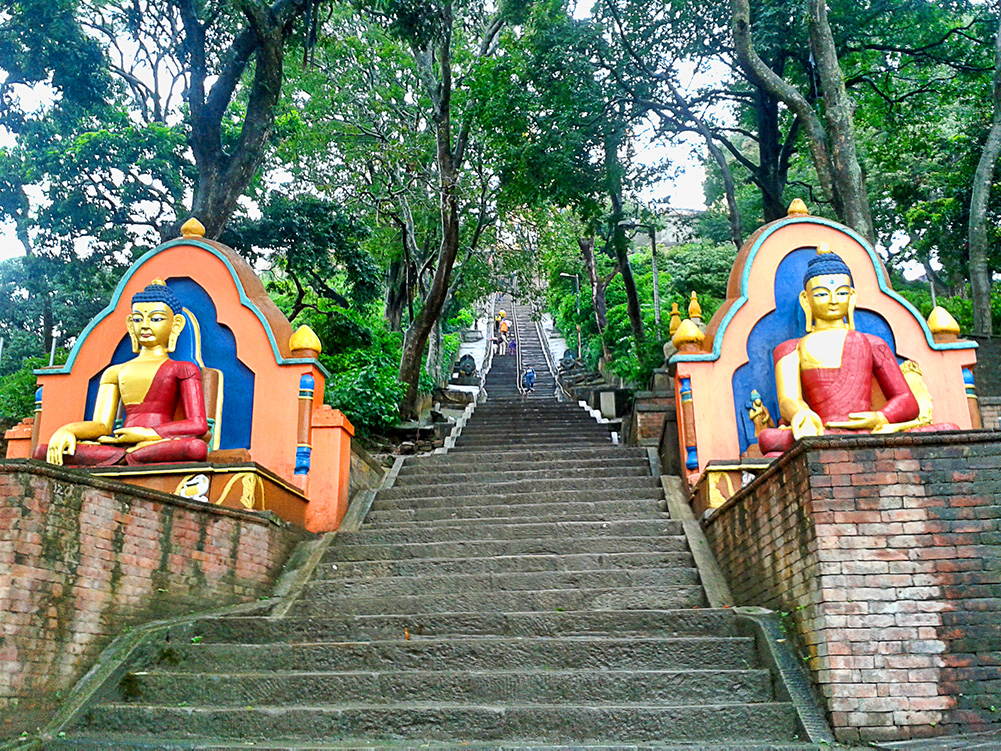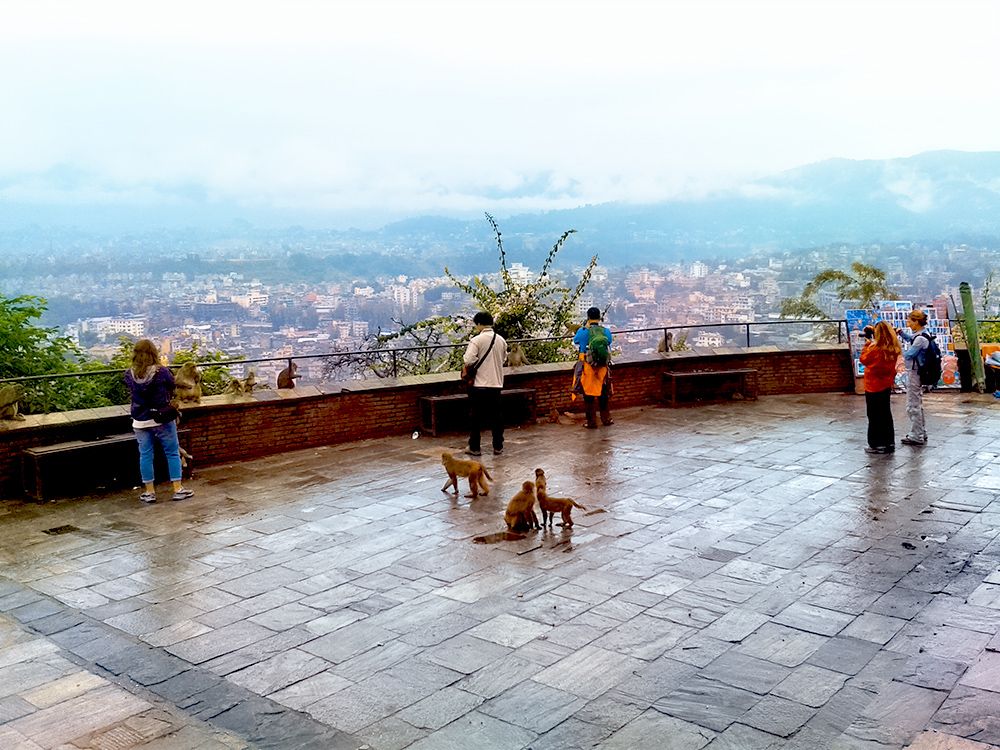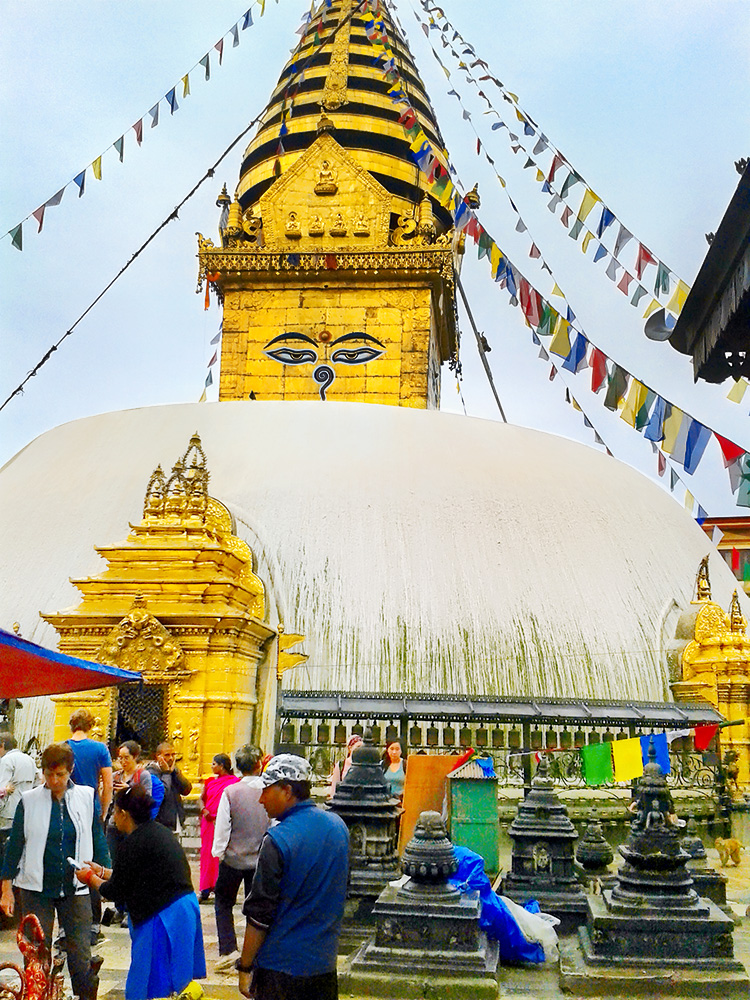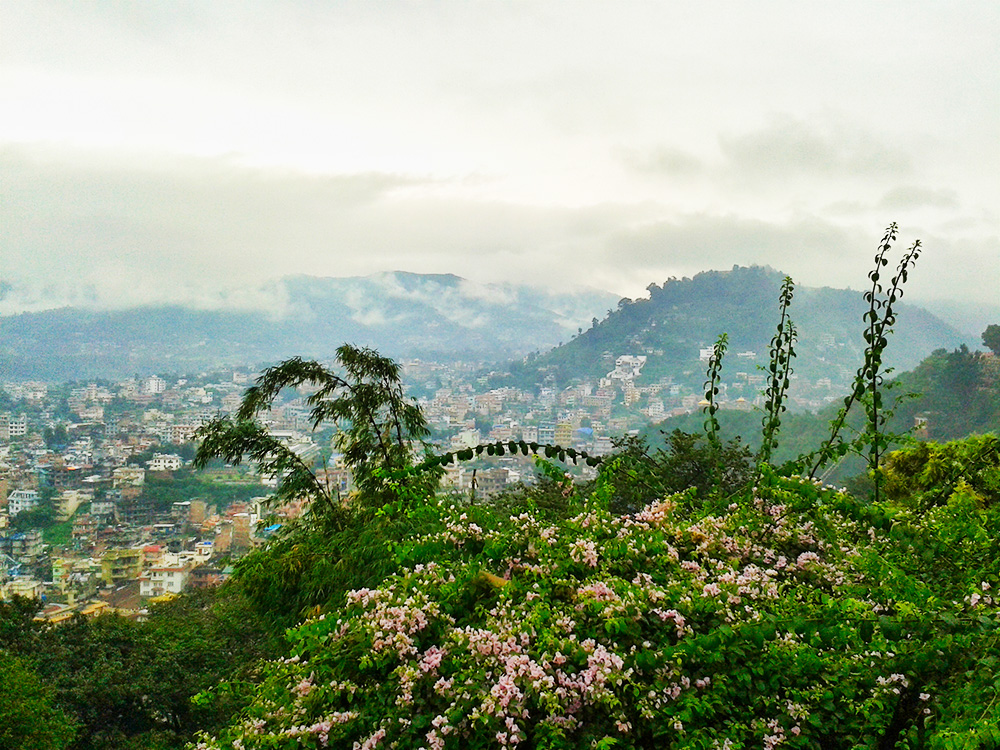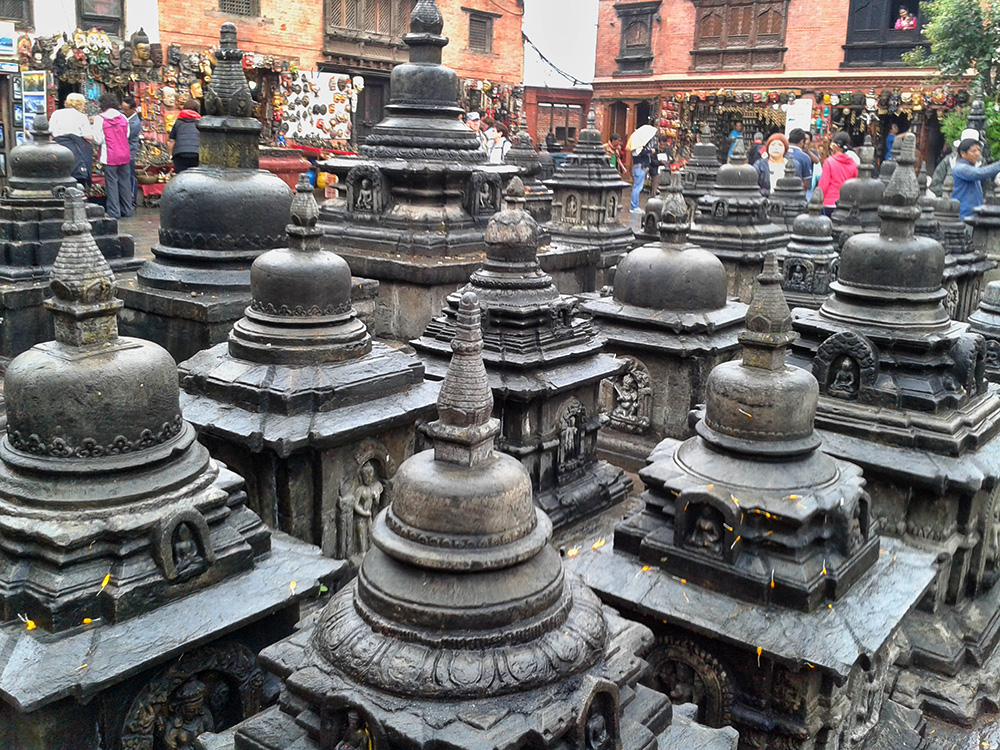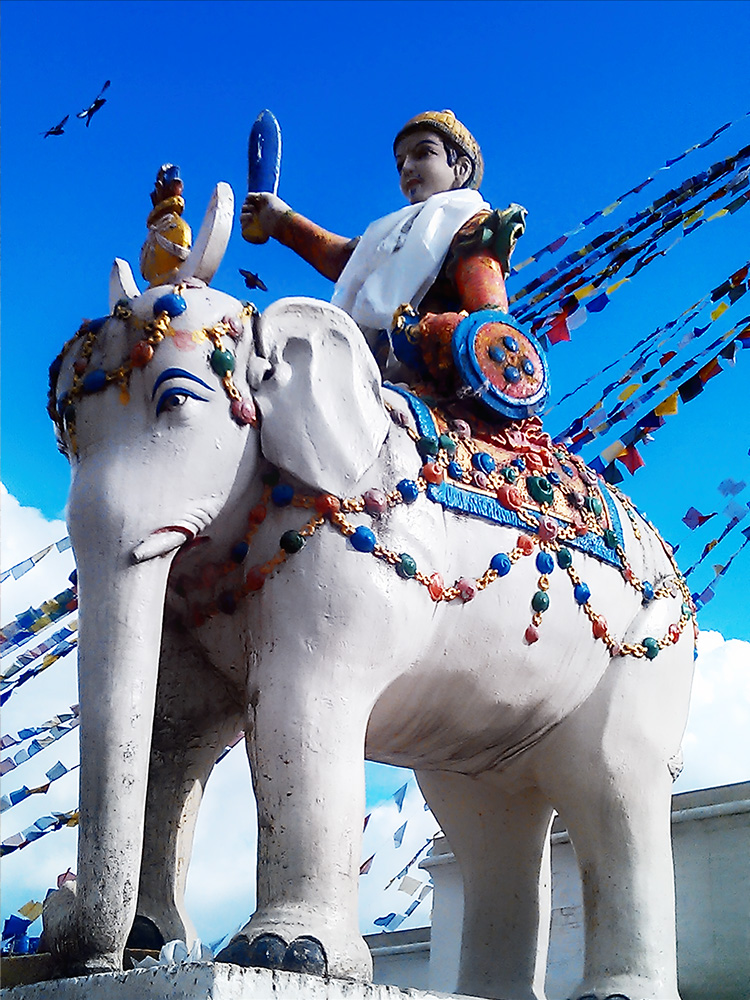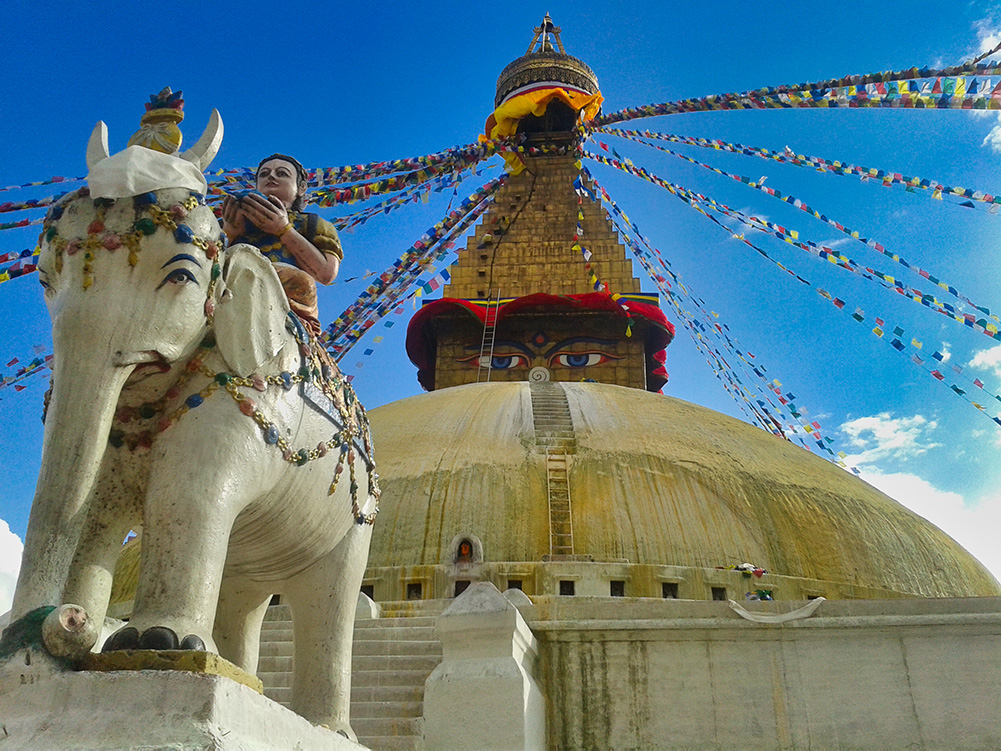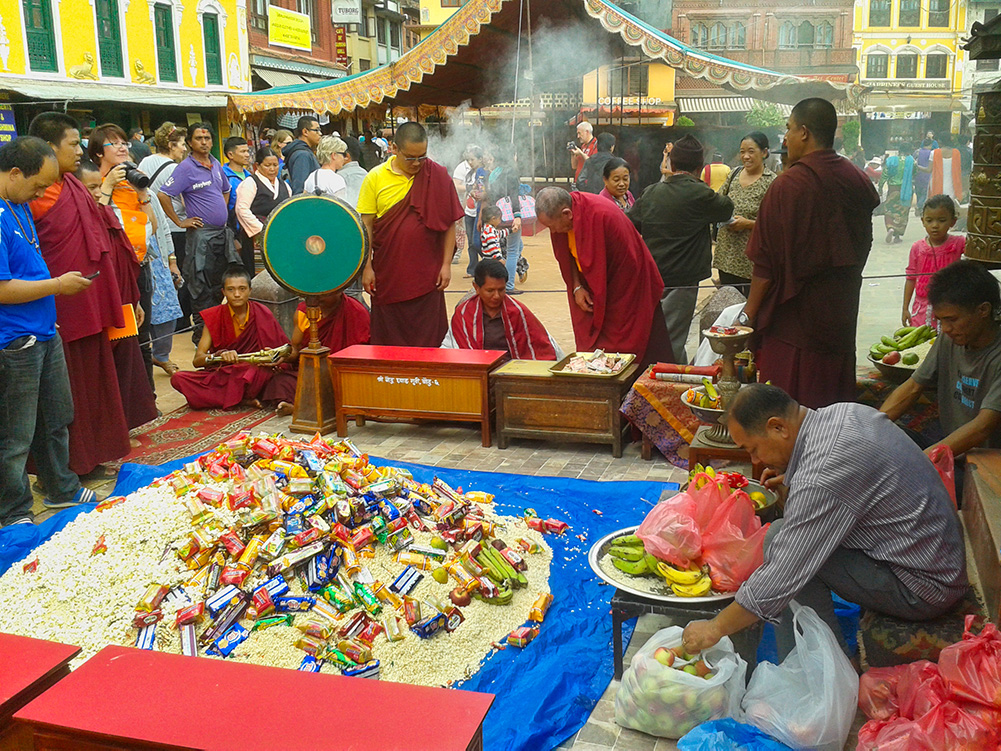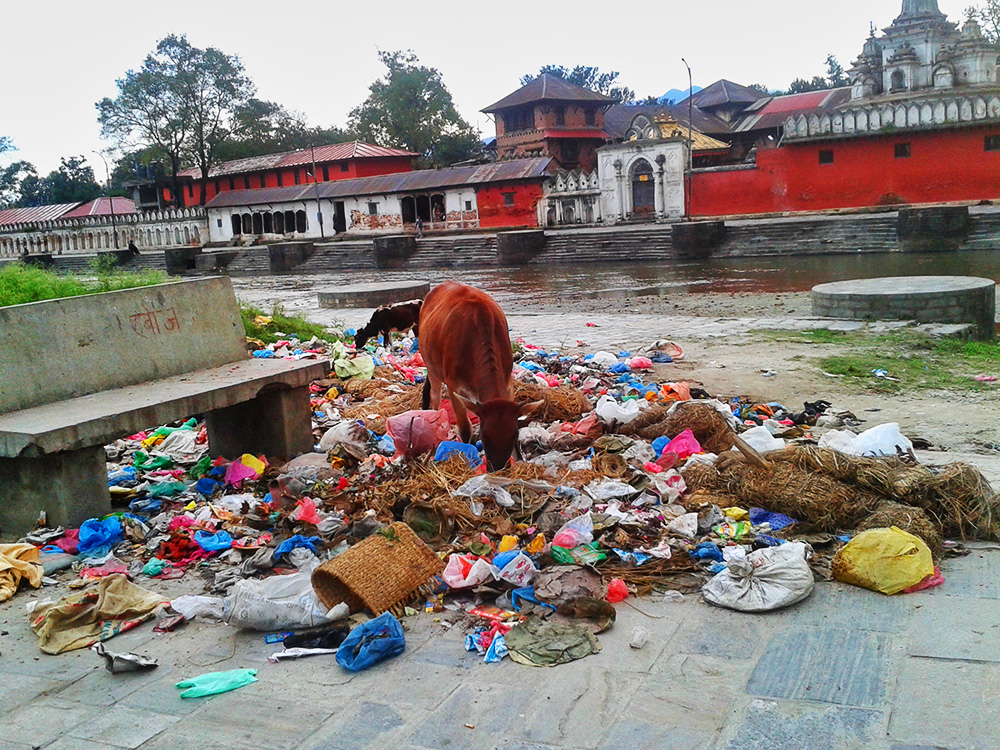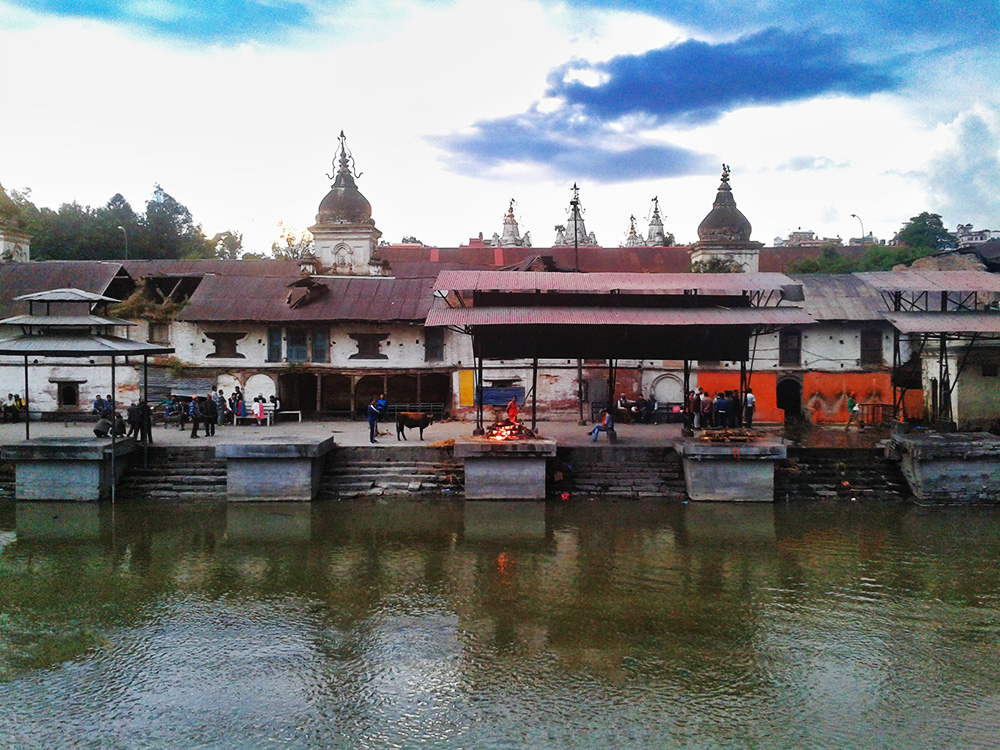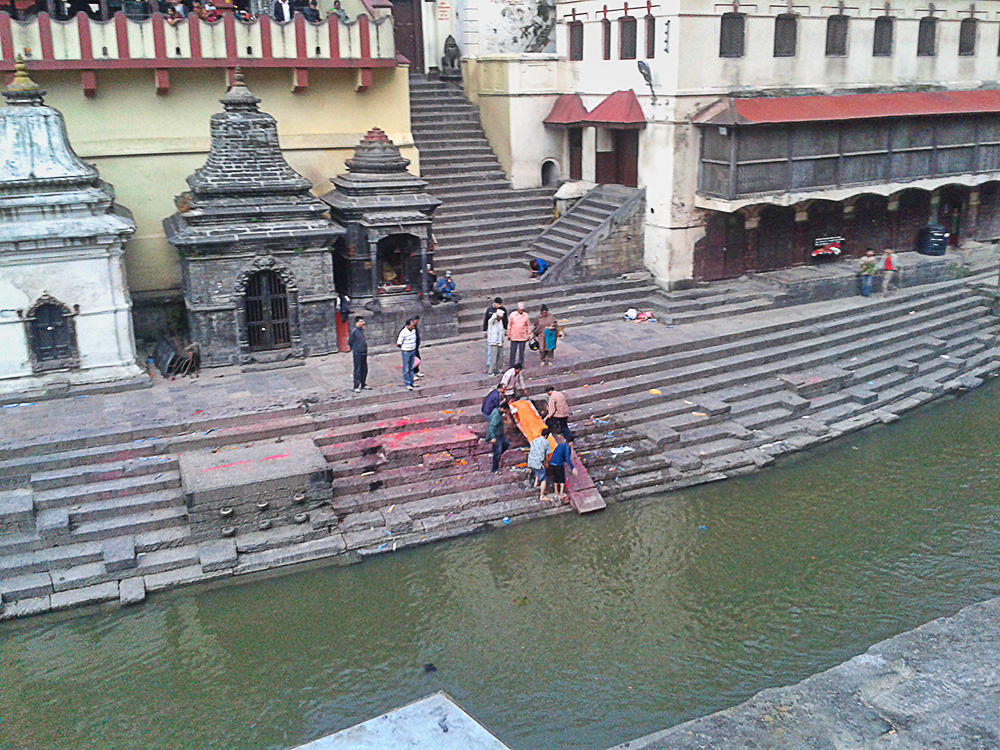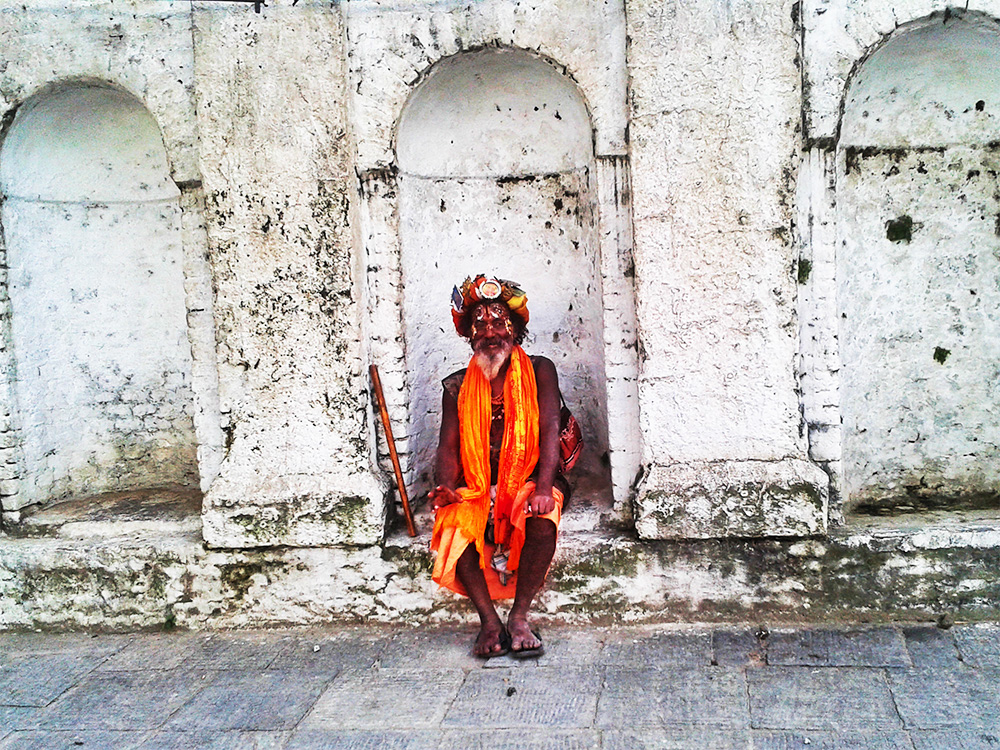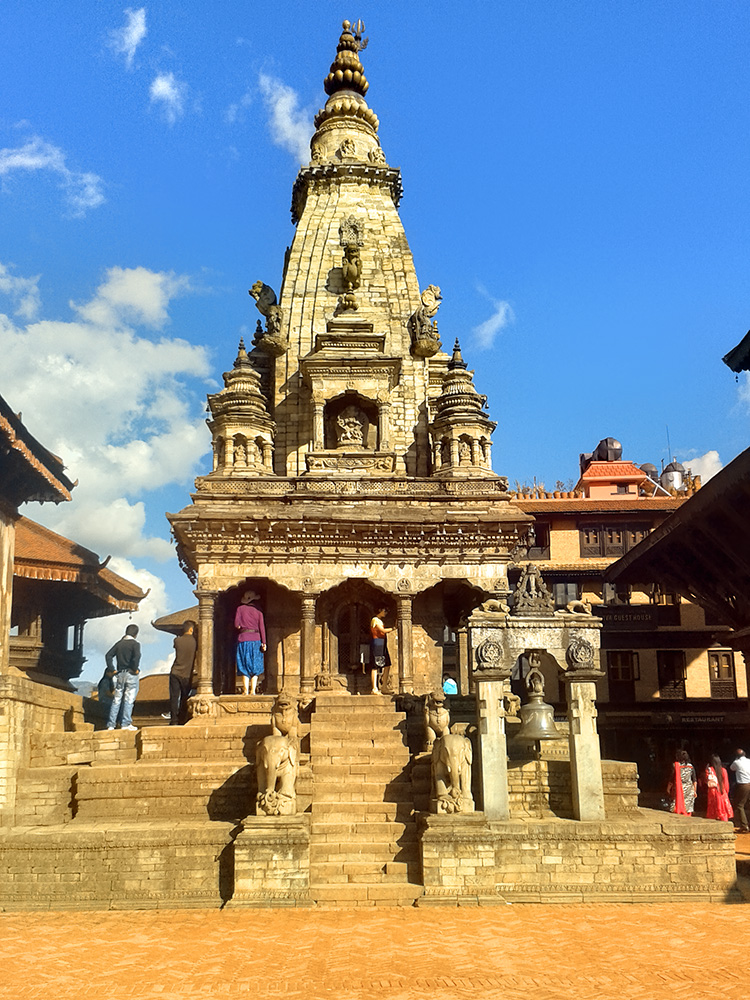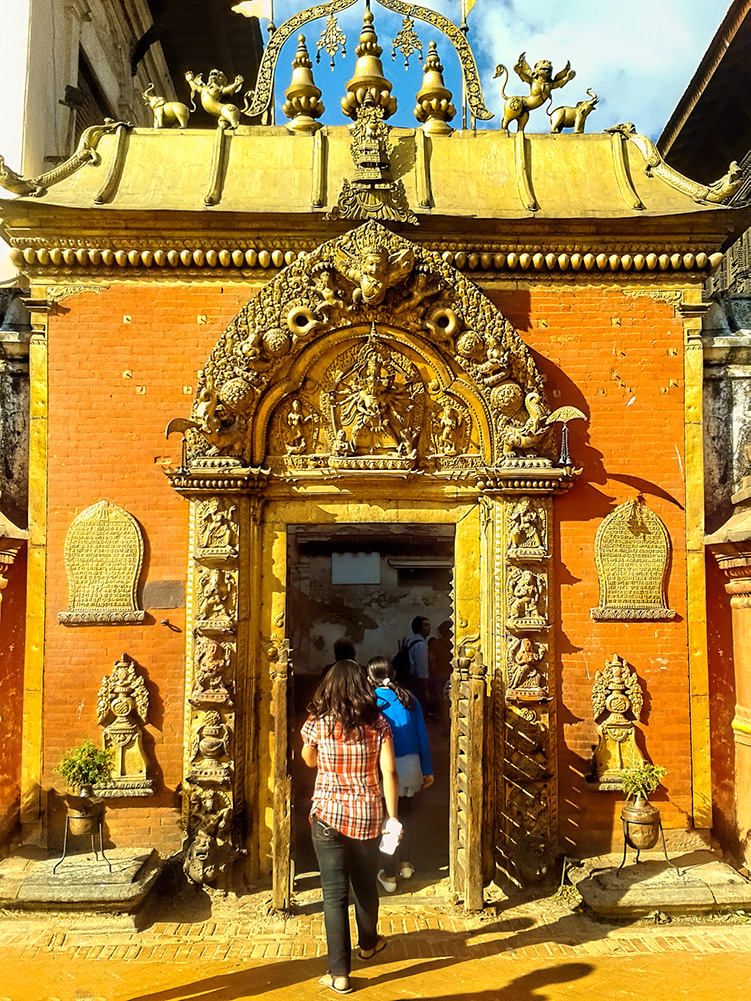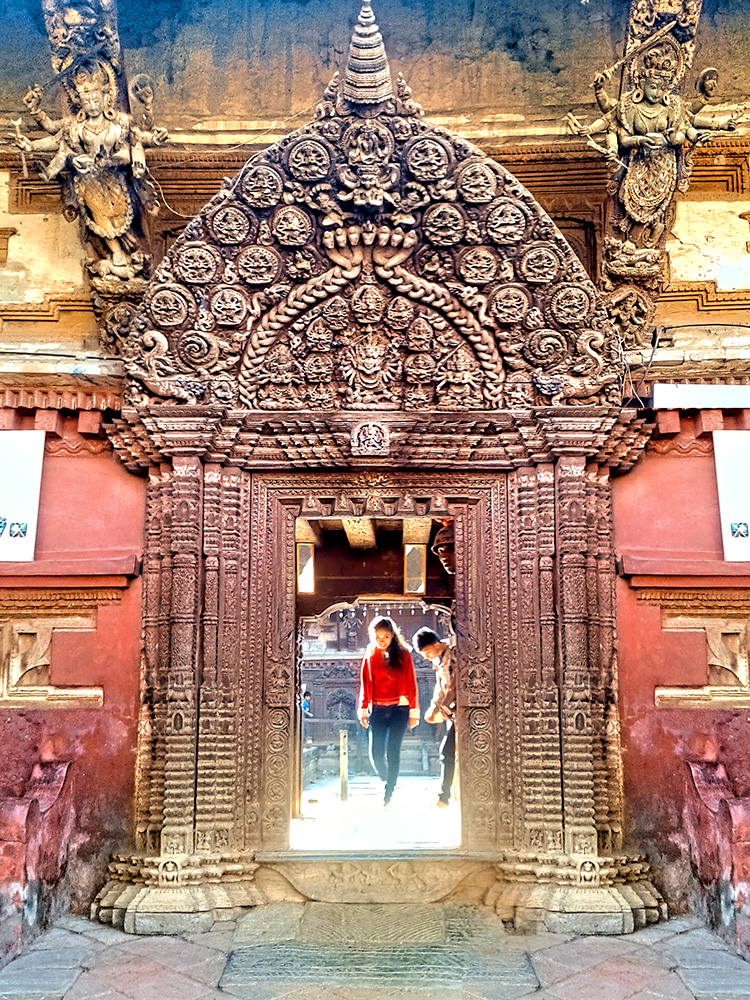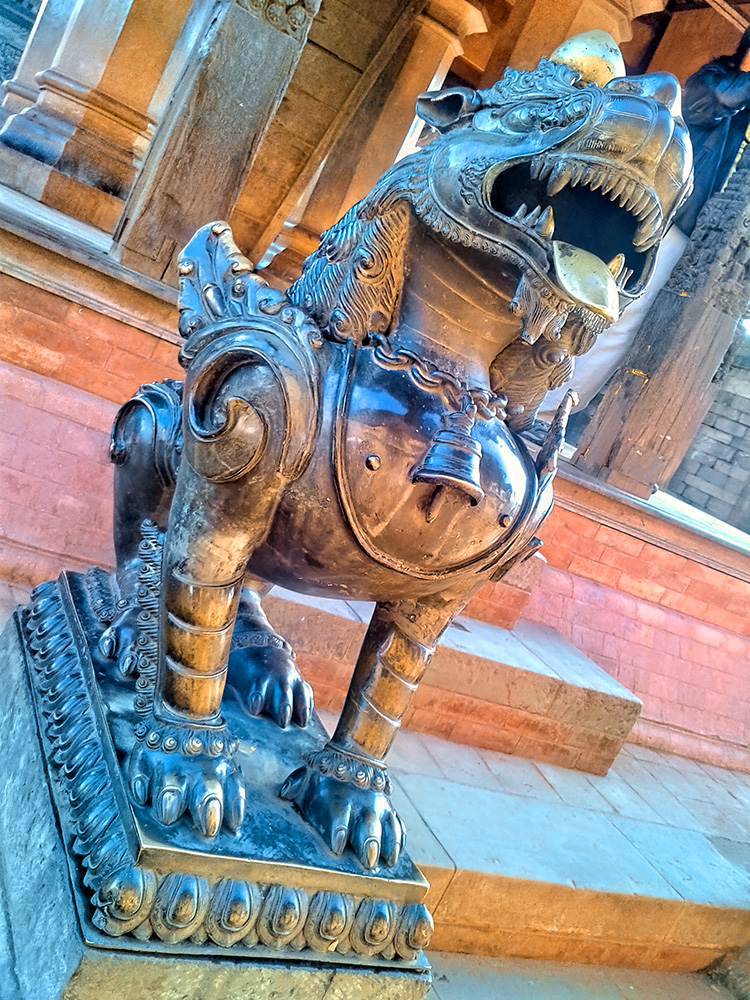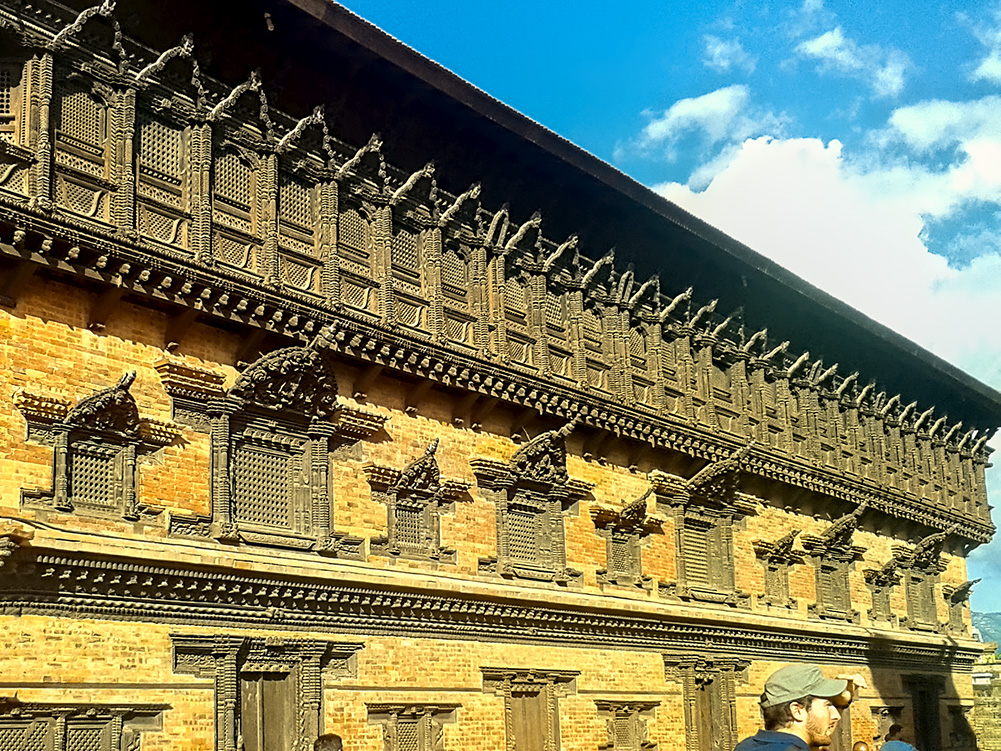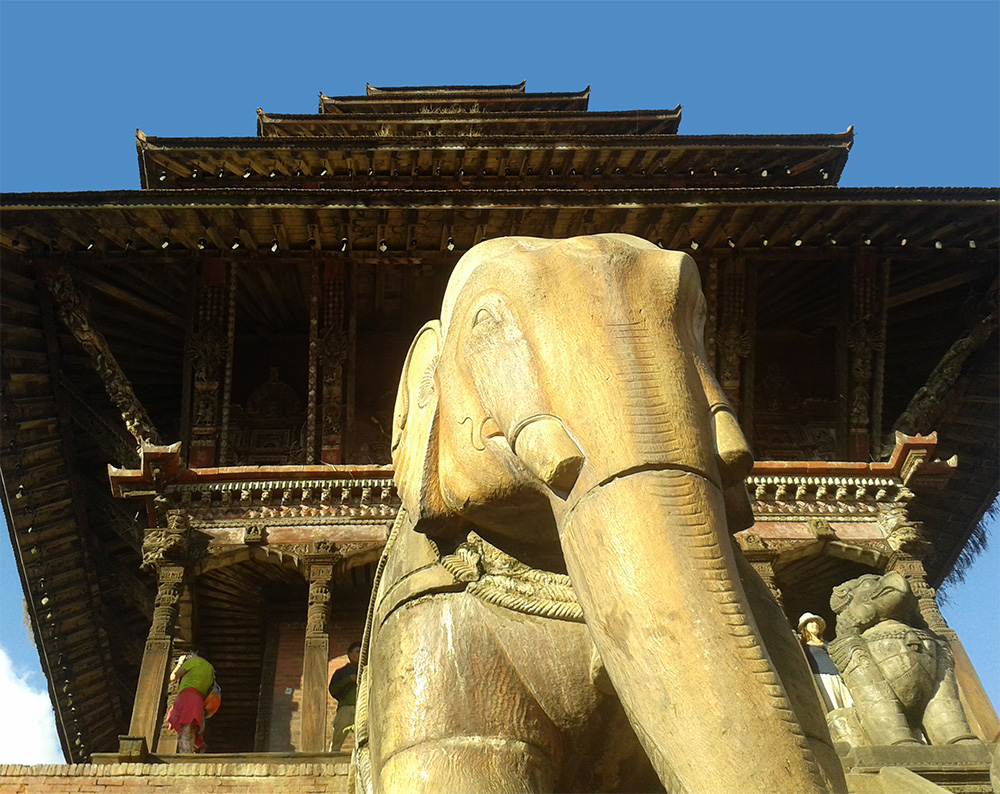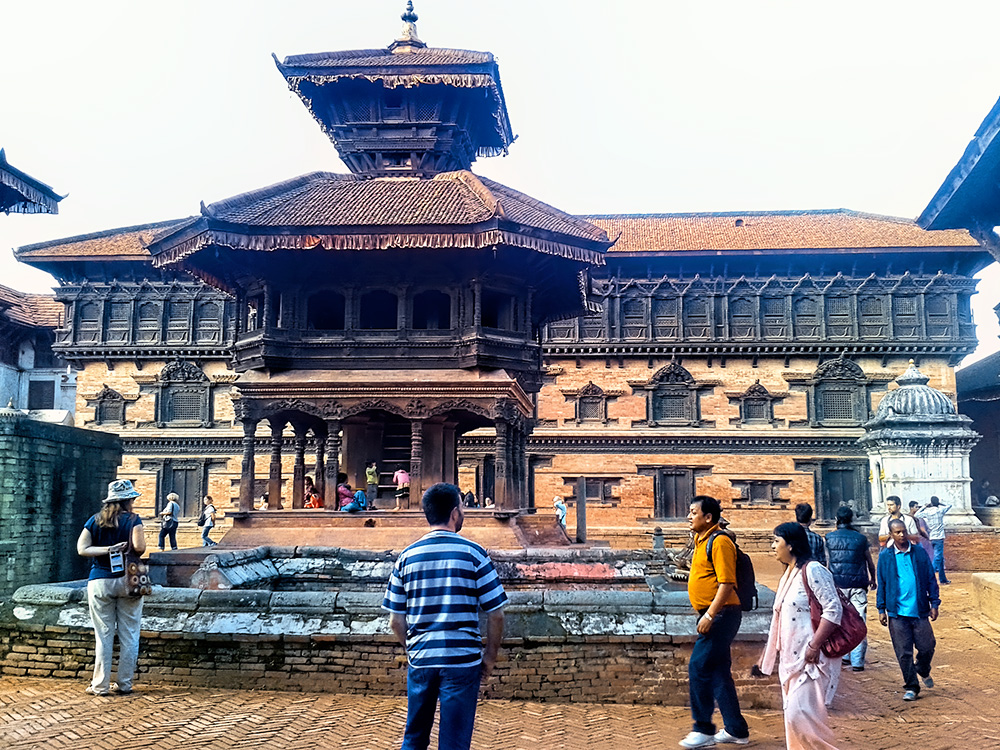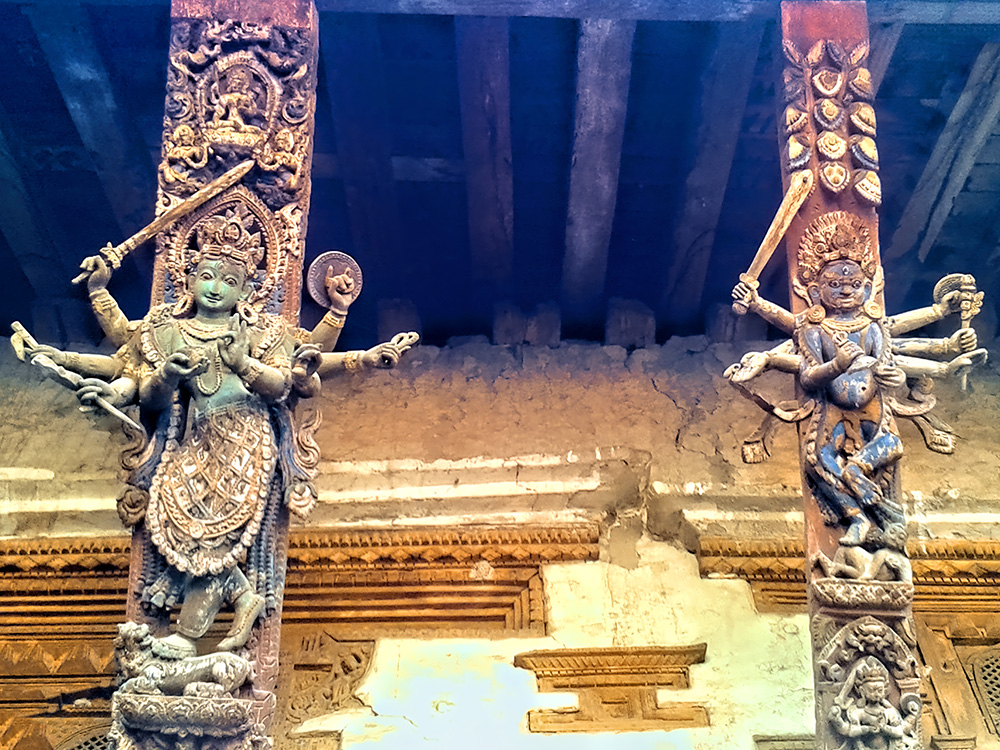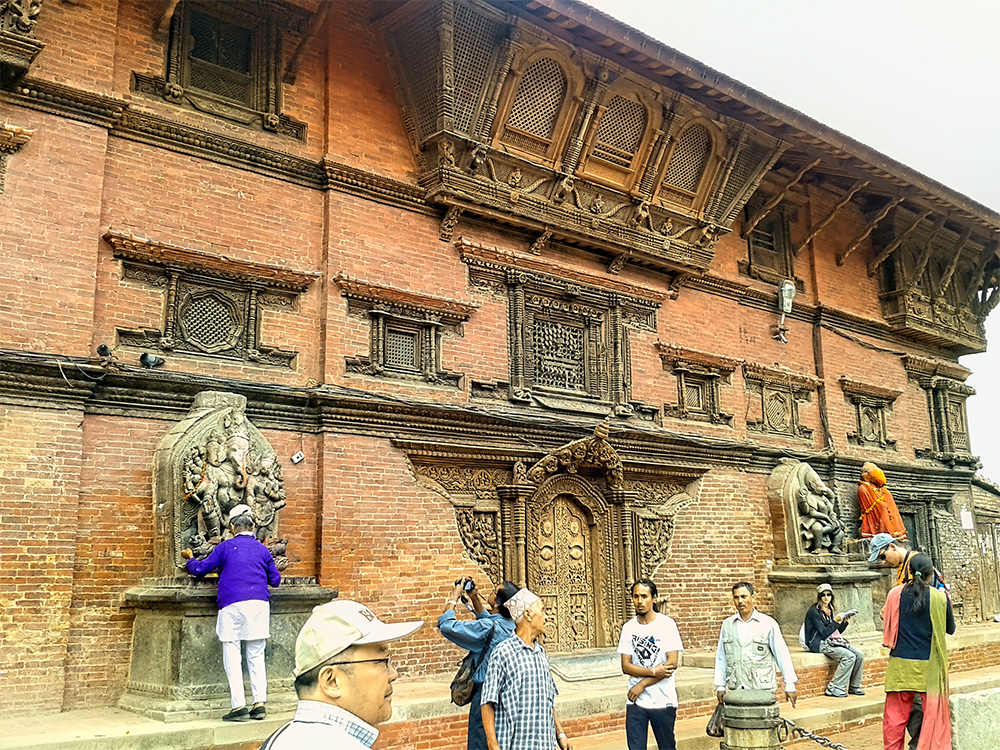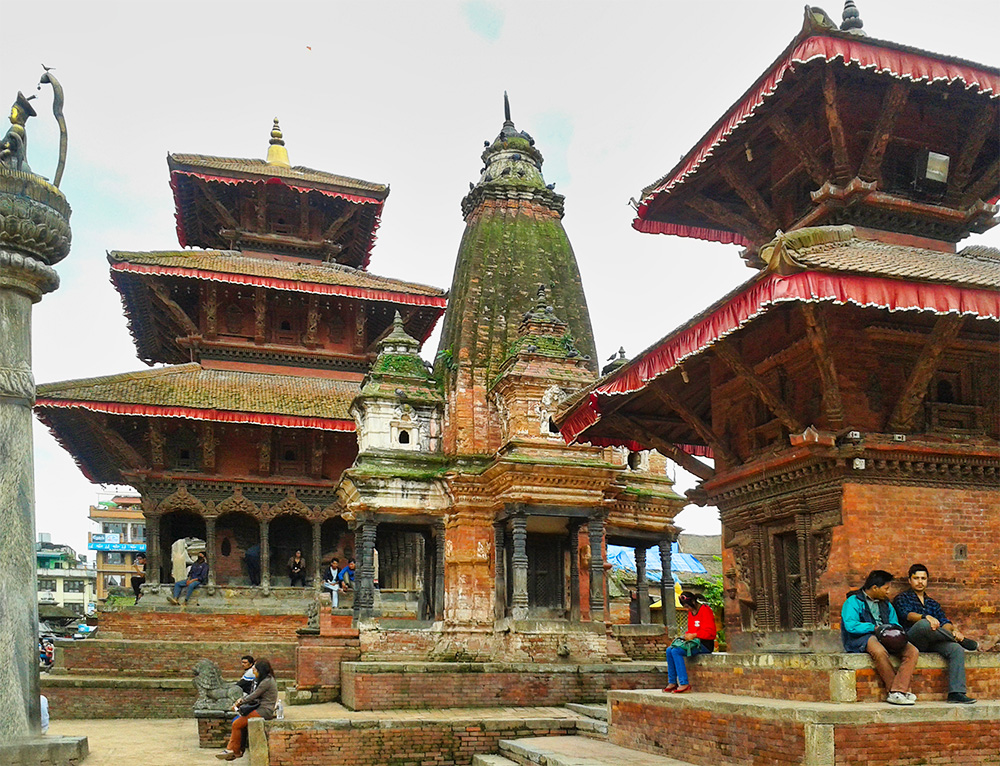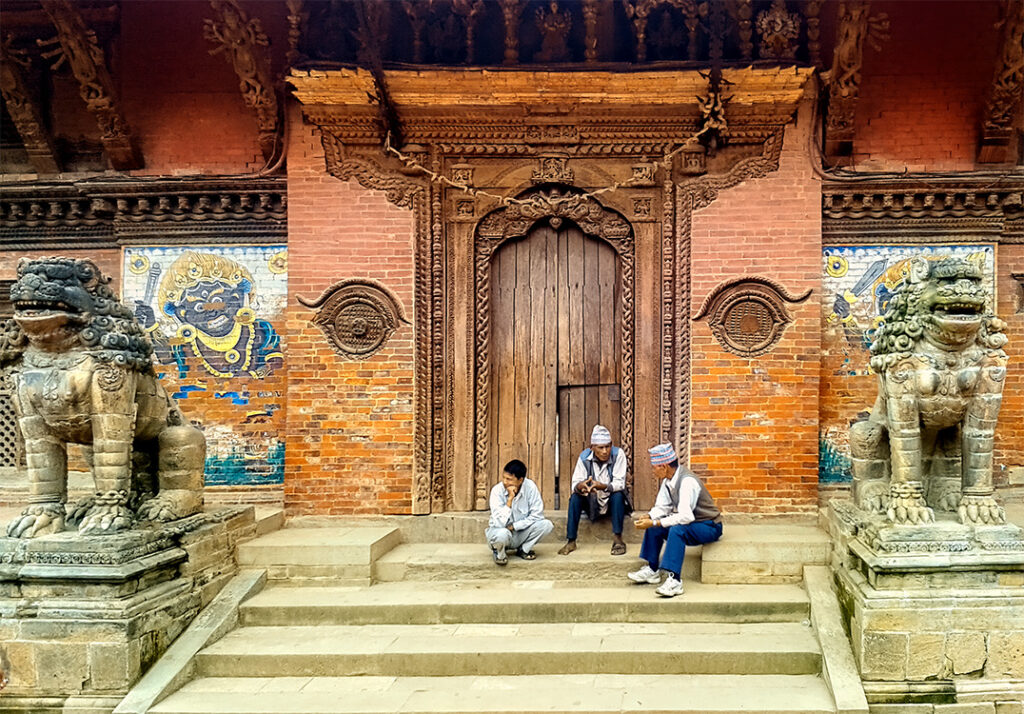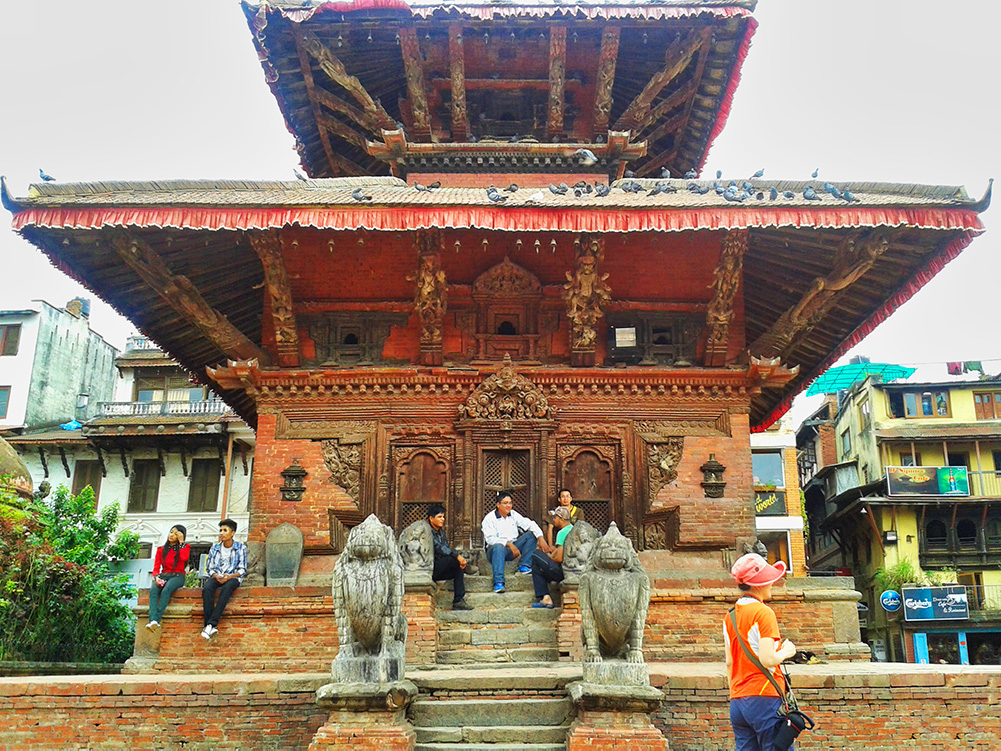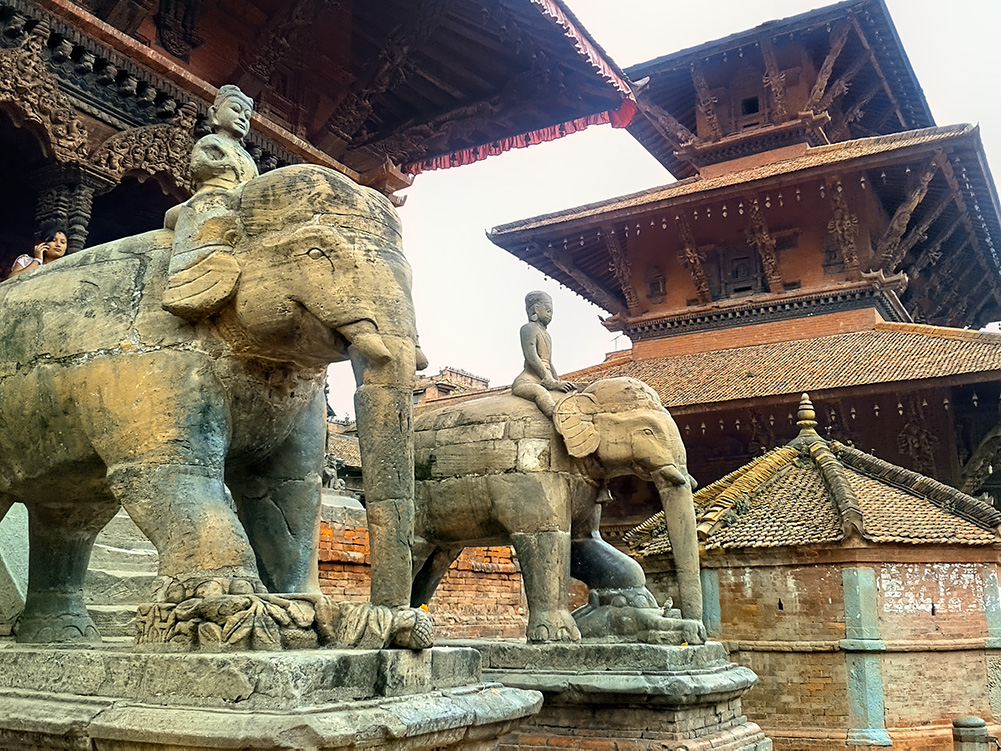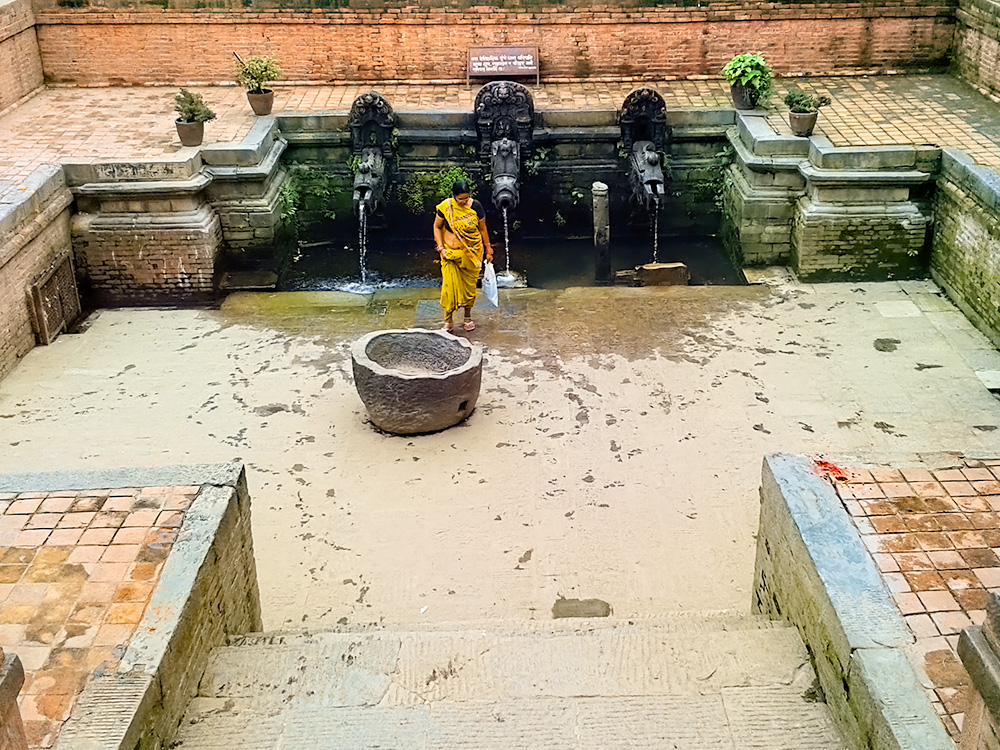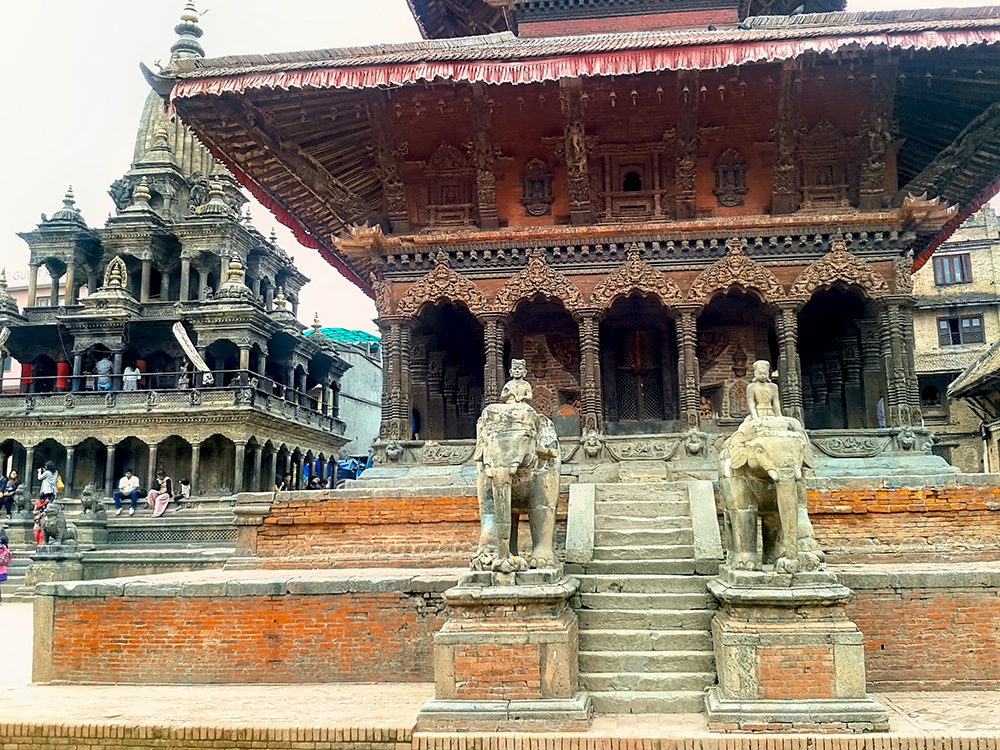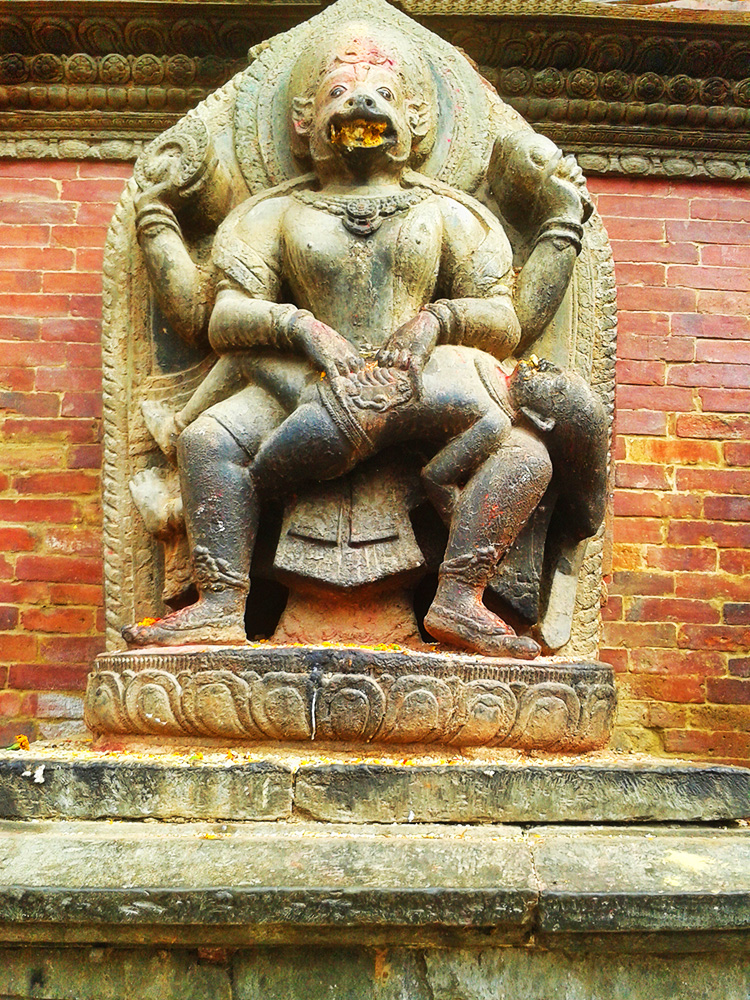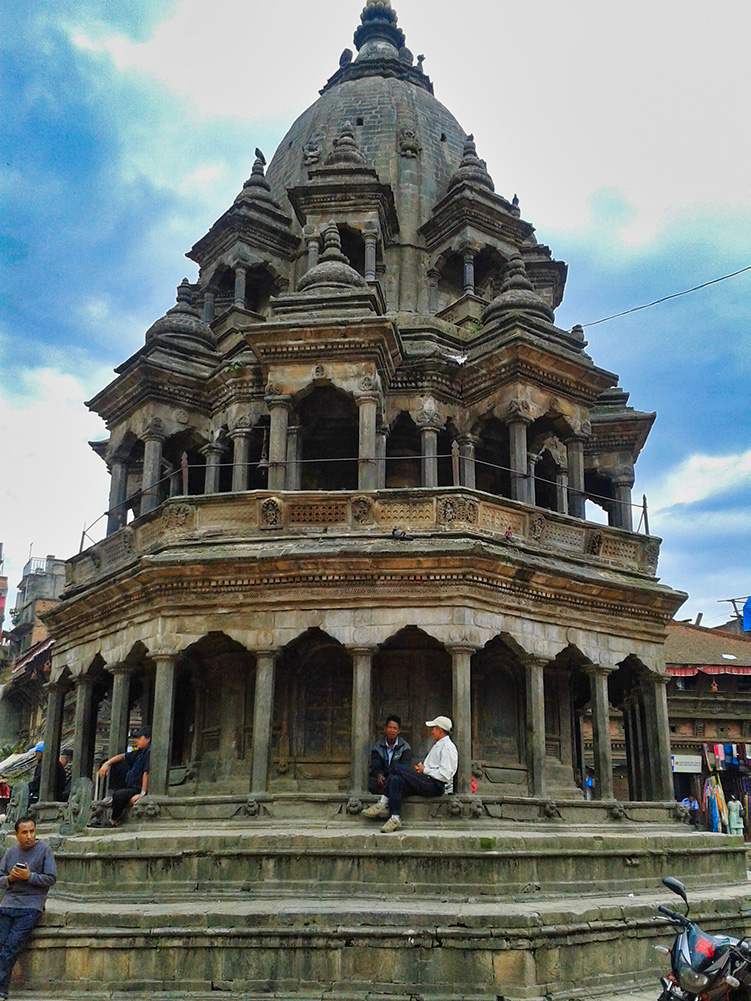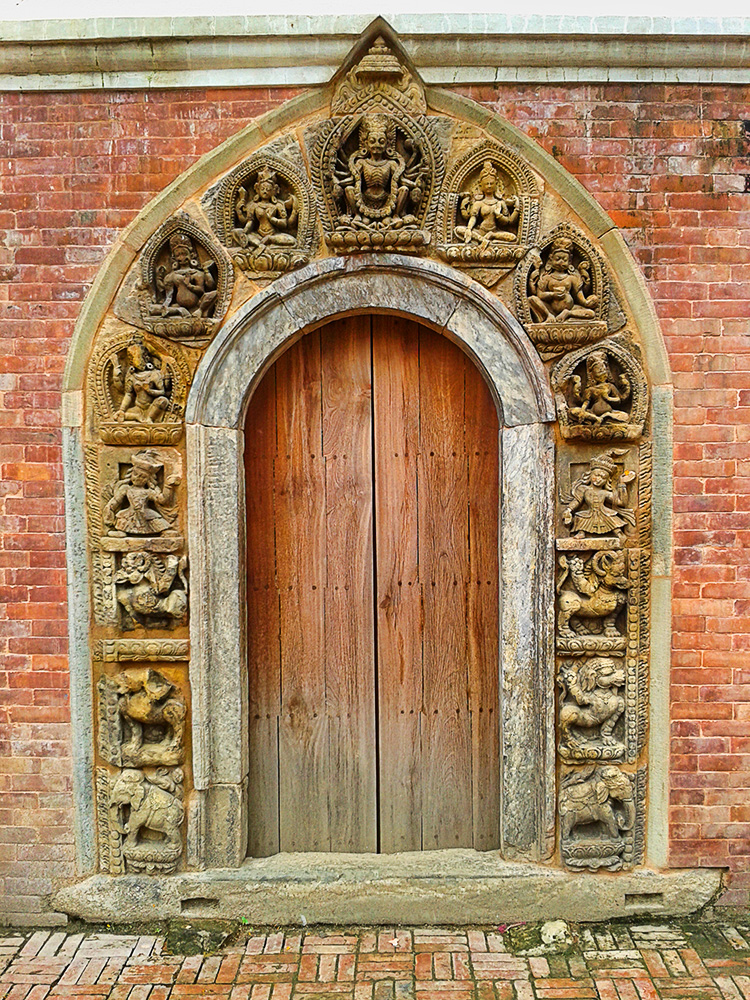In 2013 we had the chance to travel to Nepal, Kathmandu, the city of many Buddhist and Hindu temples and palaces, religious people en holy gods. The city is located in a valley on the Vishnumati River at 1,350 meters above sea level. You can see here a lot of backpackers because it is also a pre-station for mountain climbers of the Himalayas. From this high altitude, I could only feel my head hurt almost constantly.
We stayed in the Hotel Sheraton, and this was our view from the hotel.
The first days it rained a lot but that didn’t stop me from exploring the city. And because I like to see how people live in the country we are visiting I am always going on foot.
On a weekday in Nepal, Kathmandu
People in Kathmandu are traveling in small buses Tuktuks or on bigger roads on motorbikes. The roads in the city center are in bad condition and because of the rain, it was quite muddy everywhere.
There are many vendors on the street trying to make a living by selling fruits or vegetables.
But it is also not rare that you find a hairdresser cutting hair on the street.
Everywhere you go there are shrines, religious sculptures, and reliefs on the walls.
By coincidence, I also stumbled upon some religious ceremony (or actually it looked like one).
While visiting Nepal Kathmandu you will no doubt encounter sadhus (holy men). A sadhu is fully committed to achieving spiritual liberation through meditation. The gray color on the men’s skin is because they sometimes rub themselves with the ashes of the deceased. These sadhus are more than happy to be on the picture … for a fee, of course.
Durbar Square in Kathmandu
You should definitely see this square when you visit Kathmandu. With me, it was the first place I visited. Good to immediately get into the mood. I went there the first day when it was raining and we returned for a second visit on our last day.
The situation I am describing below may not exist anymore. Almost everything was destroyed by the earthquake of 2015. Fortunately, we could enjoy the square in its glory in 2013.
What to expect on the square
In addition to the busy crowds, you will also find more than 50 temples and other buildings on the square. The most important, of course, is the Royal Palace, or Honaum Dhoka, built around the 16th century. Another highlight of Durbar Square is one of the oldest wooden buildings in the world, the Kasthamandap.
But the most intriguing stretch of Durbar Square is Kumari Chowk or Kumari Bahal. This red building is the home of the Kumari. This girl is chosen to be the living goddess of the city until she reaches puberty and returns to normal life. The goddess is considered a living symbol of Devi – the Hindu concept of feminine spiritual energy.
Basantapur tower
The Basantapur Durbar stands high in nine stories and is one of the tallest structures of Durbar Square. If you are not afraid of hundred steps ahead, you will be greeted with the beautiful sight around the square.
Religion
Religion in Nepal is one of the major highlights of the country today. Wherever you go you will find the proof of it. There are a lot of stupas, shrines, and holy places. Statues, reliefs, and craftwork of Shiva, Parvati, and her son Ganesh are also very common sights.
Prayer wheels and flags are also something you will come across at the sights. Prayer flags are beautiful and soothing to look at, and they are believed to bring peace and prosperity all around them. Prayers, mantras, and symbols are printed on the flags so that nothing but blessings can be spread by the wind blowing through the flags.
The prayer wheels are made of metal, wood, or leather. They come in all shapes and sizes. A prayer or mantra is always written on the outside of the wheel. According to Tibetan Buddhism, spinning a prayer wheel has the same effect as saying the prayers or mantras in question. The mill must then be turned in the clockwise direction, otherwise, the inscription will be read backward. A frequently used inscription is the mantra: Om mani Padme hum.
Swayambhunath Stupa
The above images were made at the Swayambhunath Stupa. Swayambhu is an ancient religious complex at the top of a hill in the west of Kathmandu city. Beautiful Buddhist stupa From the center of Kathmandu it is easy to walk, go over the bridge over the river and keep right uphill. A whole different world. Definitely a must-go. Well over 400 stairs up to the hill. The reward is there: at the top of the steps is one of the most beautiful temples in Kathmandu, Swayambhunat Temple. The Tibetan name for the site means ‘sublime trees’, due to the many types of trees that can be found on the hill. It is also known as the Monkey Temple as holy monkeys are living in the north-west parts of the temple.
Bouddhanath Stupa
A similar place to the Swayambhunath Stupa is the Boudhanath Stupa. Overwhelmingly large this Tibetan Buddhist stupa in Kathmandu. The largest in Asia with its dimensions. The square consists of shops with religious items such as singing bowls, musical instruments, flags, clothes with texts, incense, books, flowers, etc. Besides, there are many small temples, a monastery, and coffee shops. This is truly a place for pilgrims. You just feel that this is a religious place.
The temple is the ultimate destination for many people. They got dressed up and saved up to ever get here in their lives. They walk past the prayer scrolls and pray. We only have access to the first ring, the rest of the temple is only accessible to monks. People lie here in a trance on wooden day beds, meditating and praying. From the highest golden point, the lucky flags fly all over the square. They rustle like leaves in a forest. Well worth a visit to this World Heritage Site!
Pashupatinath Temple
Pashupatinath Temple is one of the most sacred Hindu temples of Nepal dedicated to the god Shiva. Every year this temple attracts hundreds of elderly followers of Hinduism. They arrive here to find shelter for the last several weeks of their lives, to meet death, be cremated on the banks of the river, and travel their last journey with the waters of the sacred river Bagmati. We watched the ceremonies from across the river. Even here, the smell of burnt flesh penetrated our nose. What is it special to be able to see this spectacle at one of the most famous temples in Kathmandu from a distance?
Do you love special temples and cultural sights in Nepal, just like me? Under the smoke of Kathmandu, in the Kathmandu Valley, lie the royal cities of Nepal. Patan and Bhaktapur can be visited as a day trip from Kathmandu.
Bhaktapur
This royal city is located in Kathmandu Valley together with Kathmandu and Patan. The city has always been known as one large open-air museum with well-preserved temples and many traditional buildings and houses. The city has no fewer than three squares surrounded by imposing temples and the architecture is among the most refined in the country. Good to know that despite the earthquake in 2015, many beautiful buildings have survived.
Patan
Patan is not far from Kathmandu. Over time, the cities have converged more and more. They are only separated by a river. We visited Patan as a day trip from Kathmandu. As in Kathmandu and Bhaktapur, the highlight of Patan is the central Durbar Square. This is the religious and historical center of the city. Many people come to make their sacrifices to the gods. Durbar Square in Patan is smaller and quieter than Kathmandu’s eponymous square. Yet it has the greatest concentration of temples in Nepal per square meter. These sights of Patan are a fine example of Newari architecture. In the 2015 earthquake, many of the buildings were destroyed or damaged.
When we were planning our trip to Nepal Kathmandu, we found the best way to fly through Abu Dhabi. And since we have never been to the UAE before we grabbed this chance and stretched our stay a bit longer.
